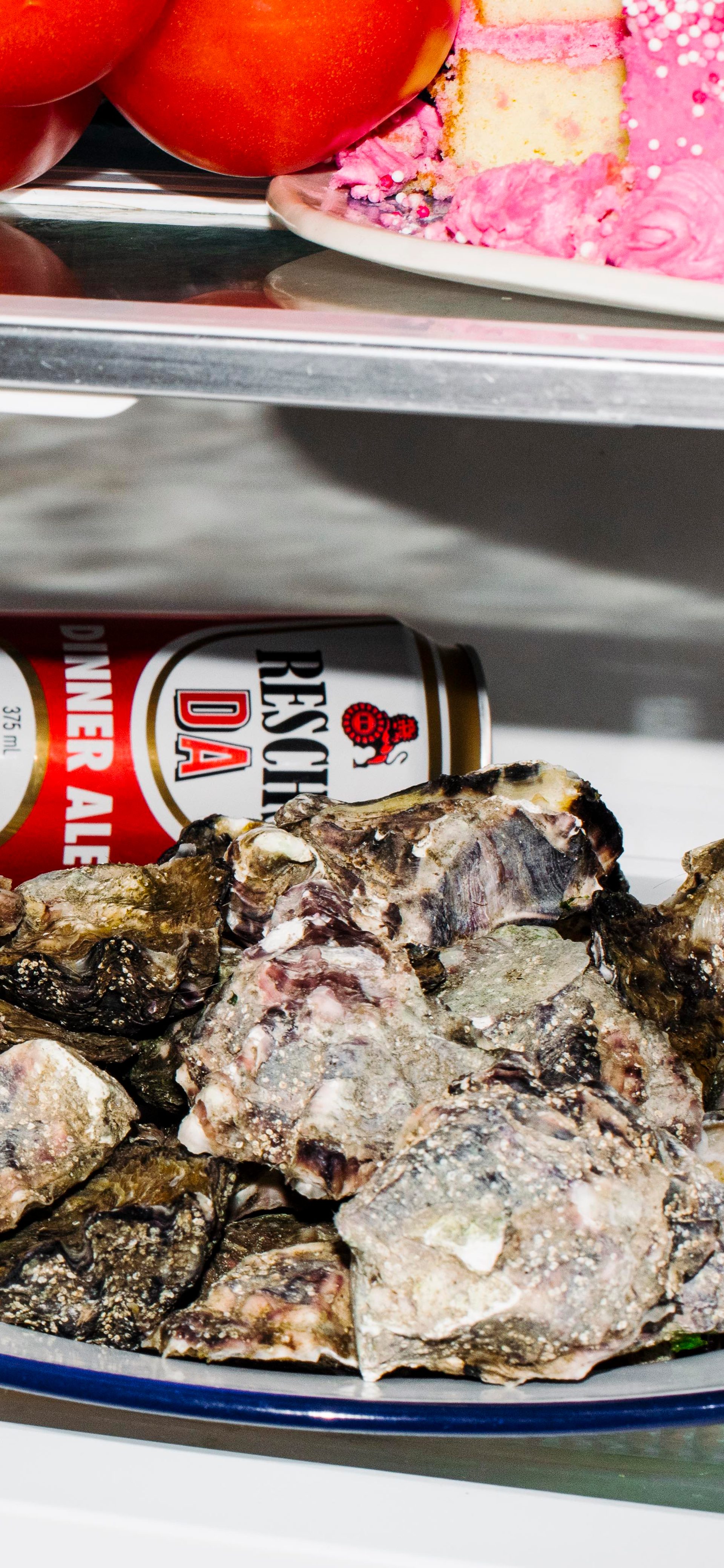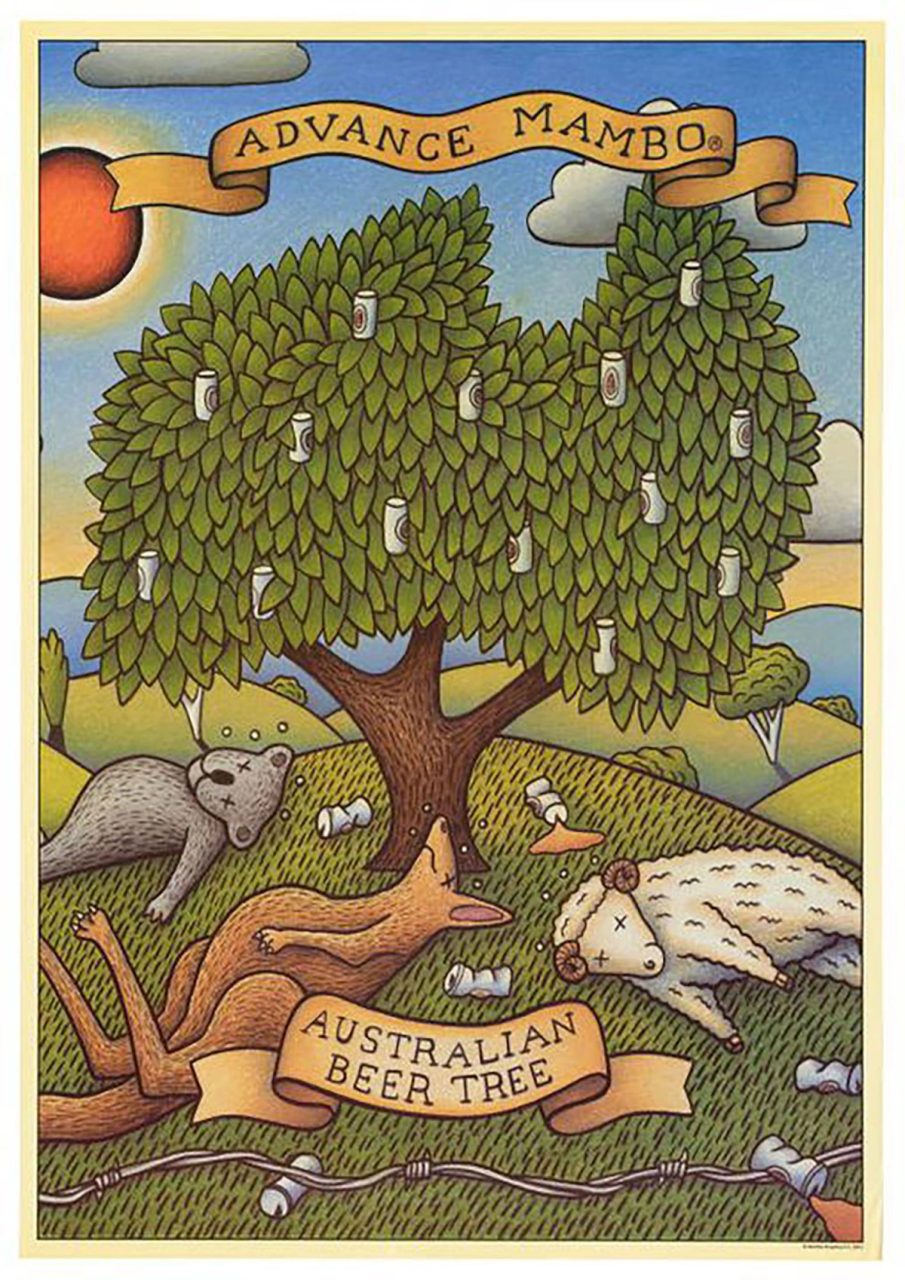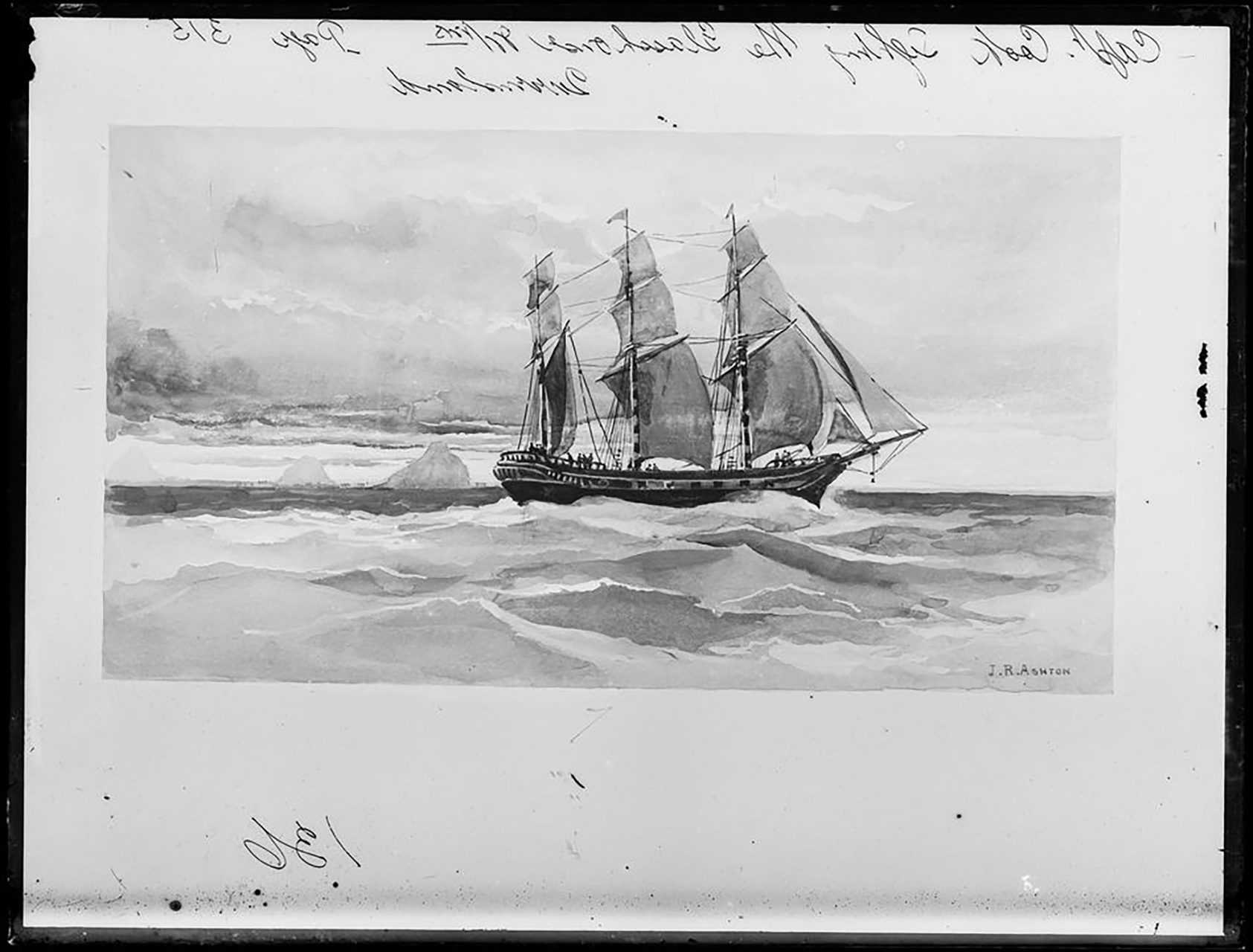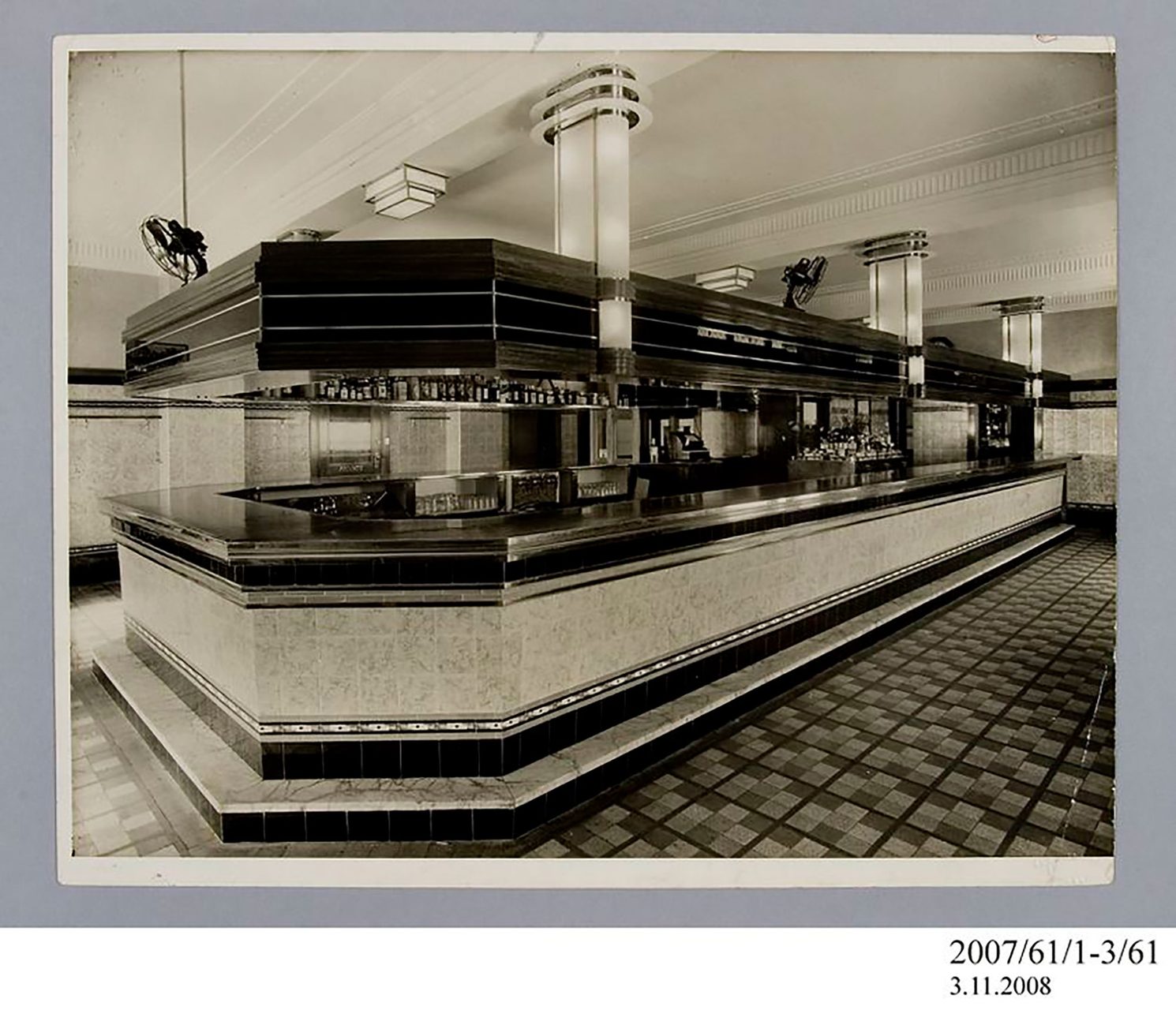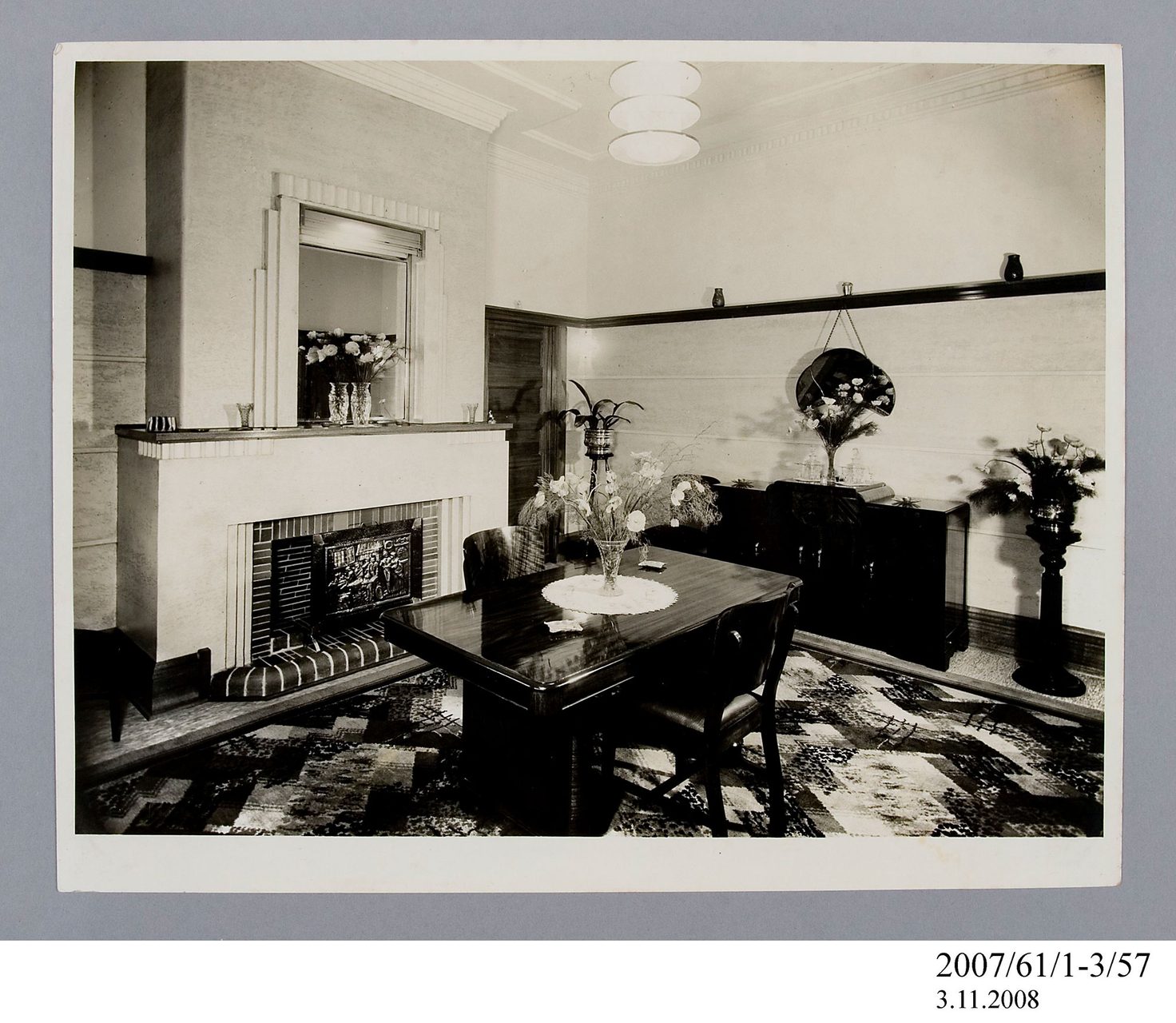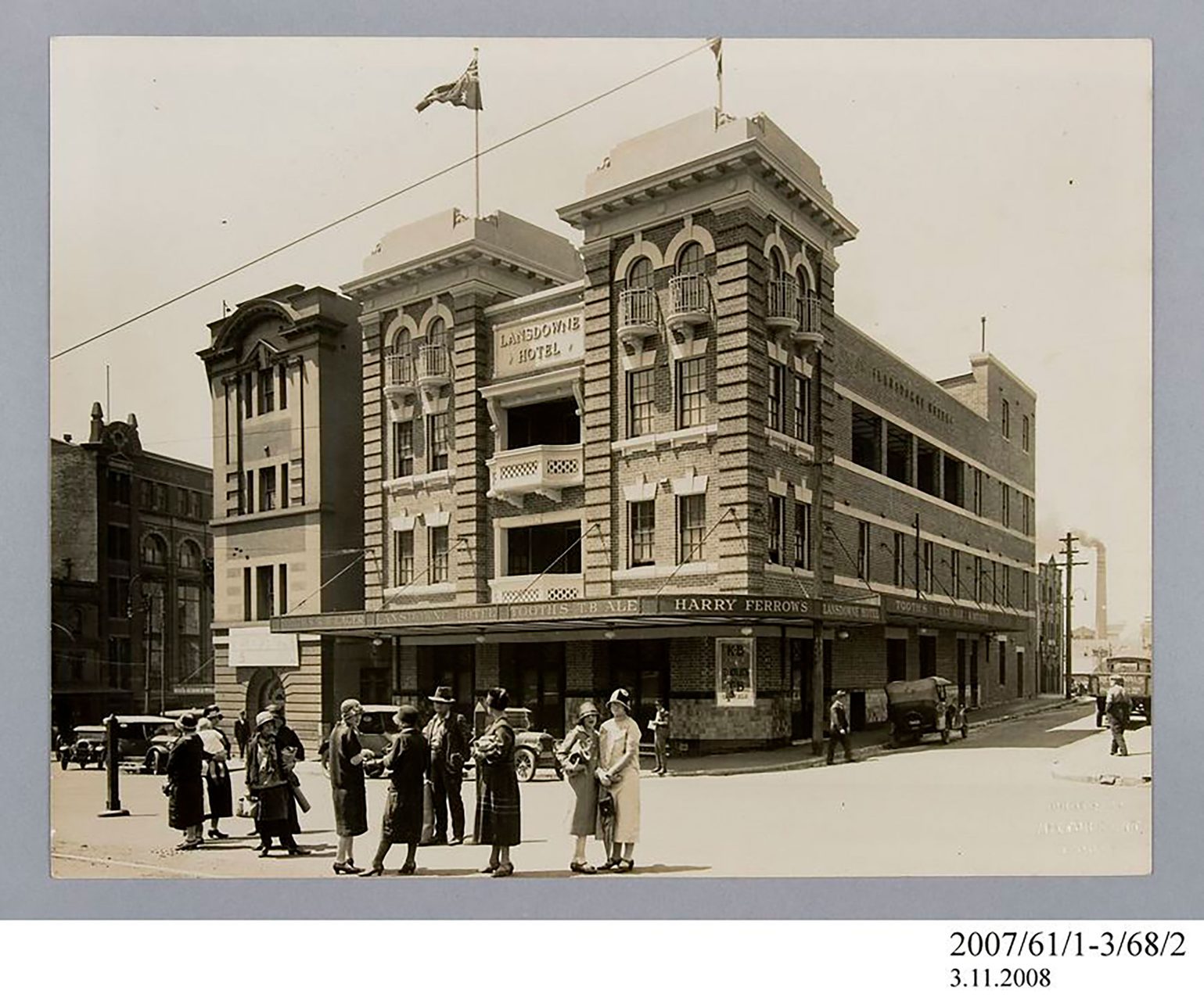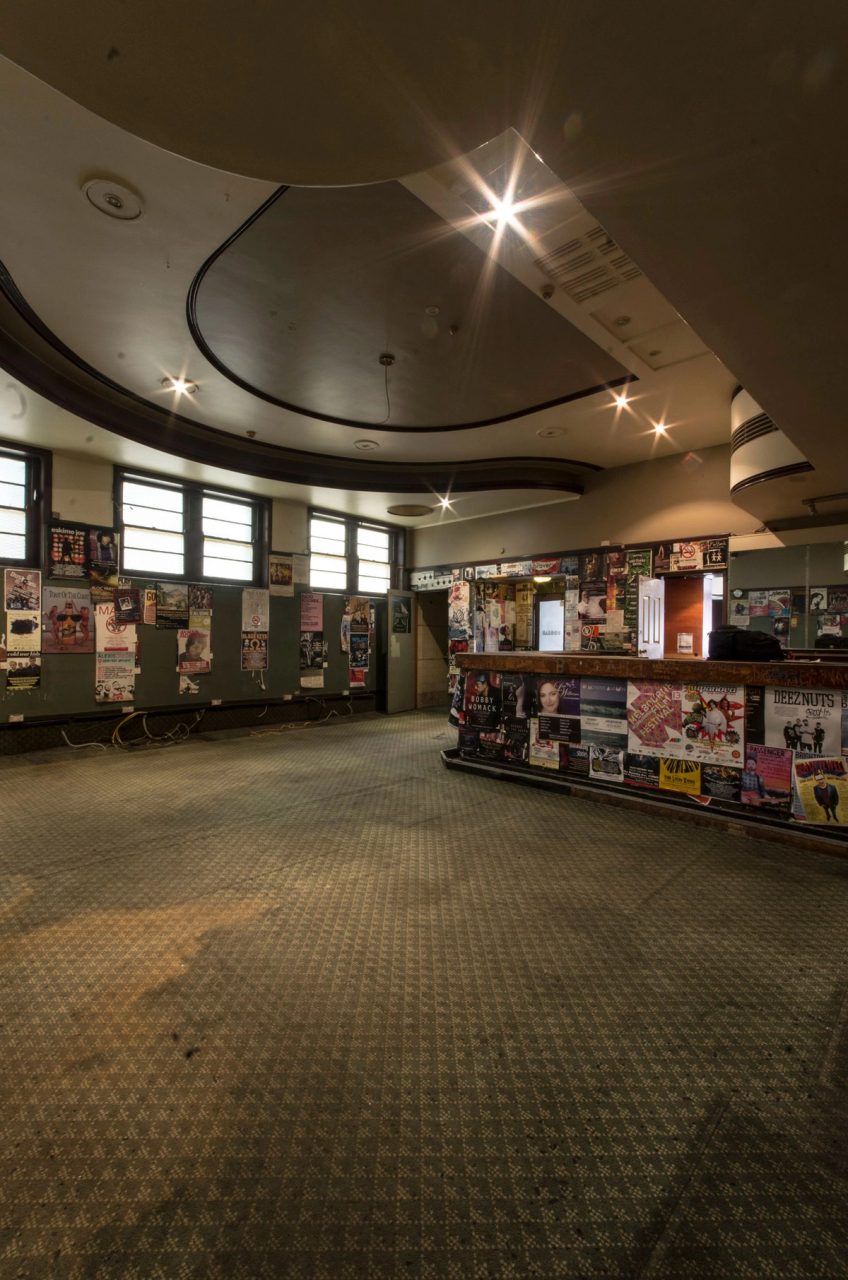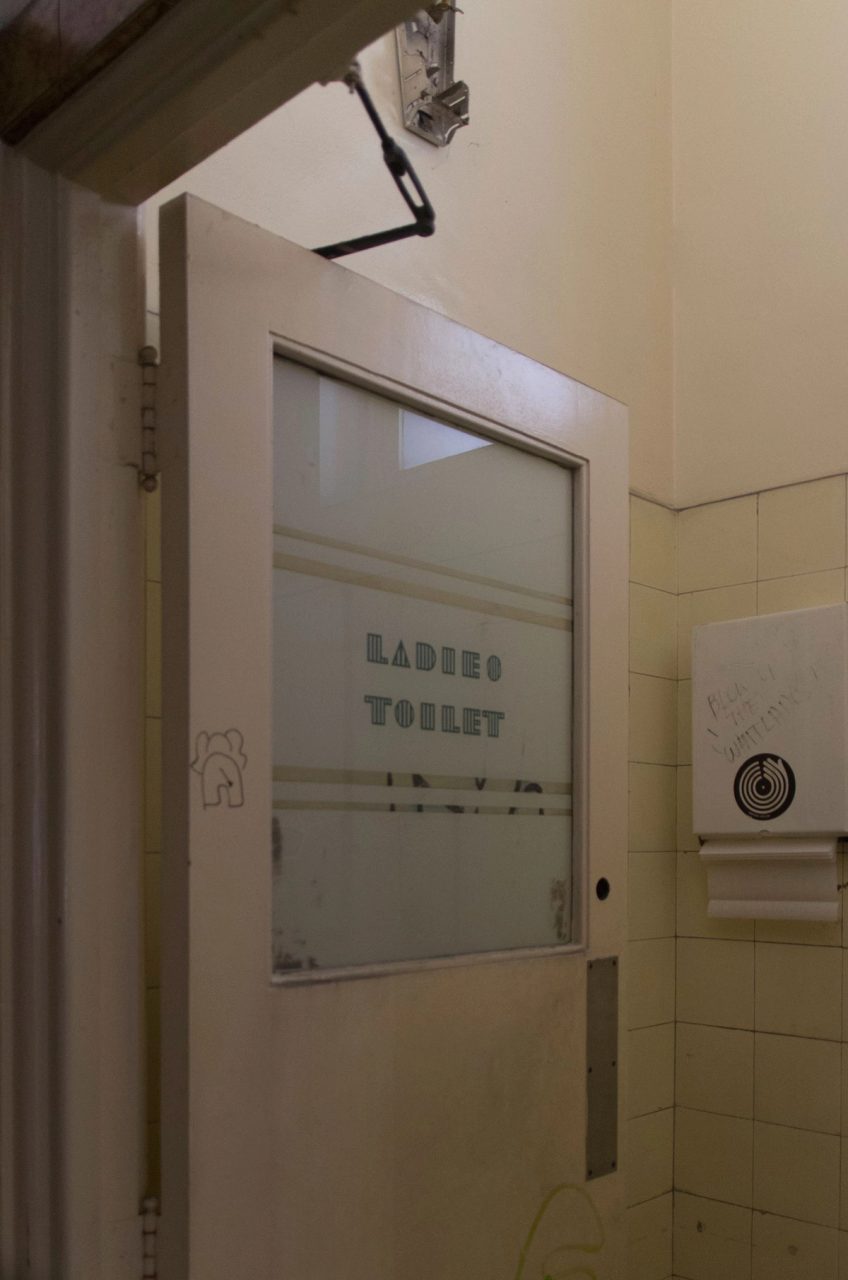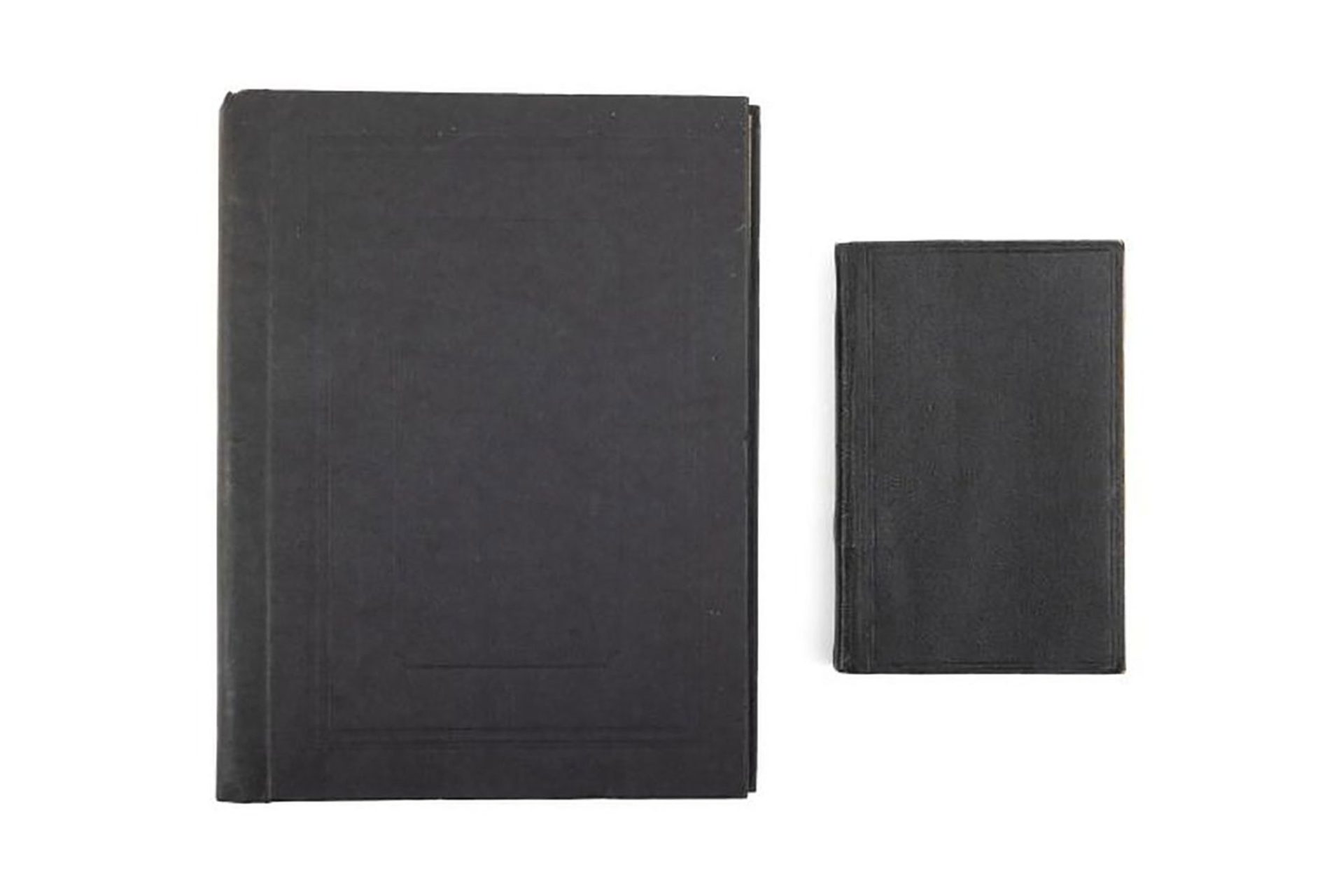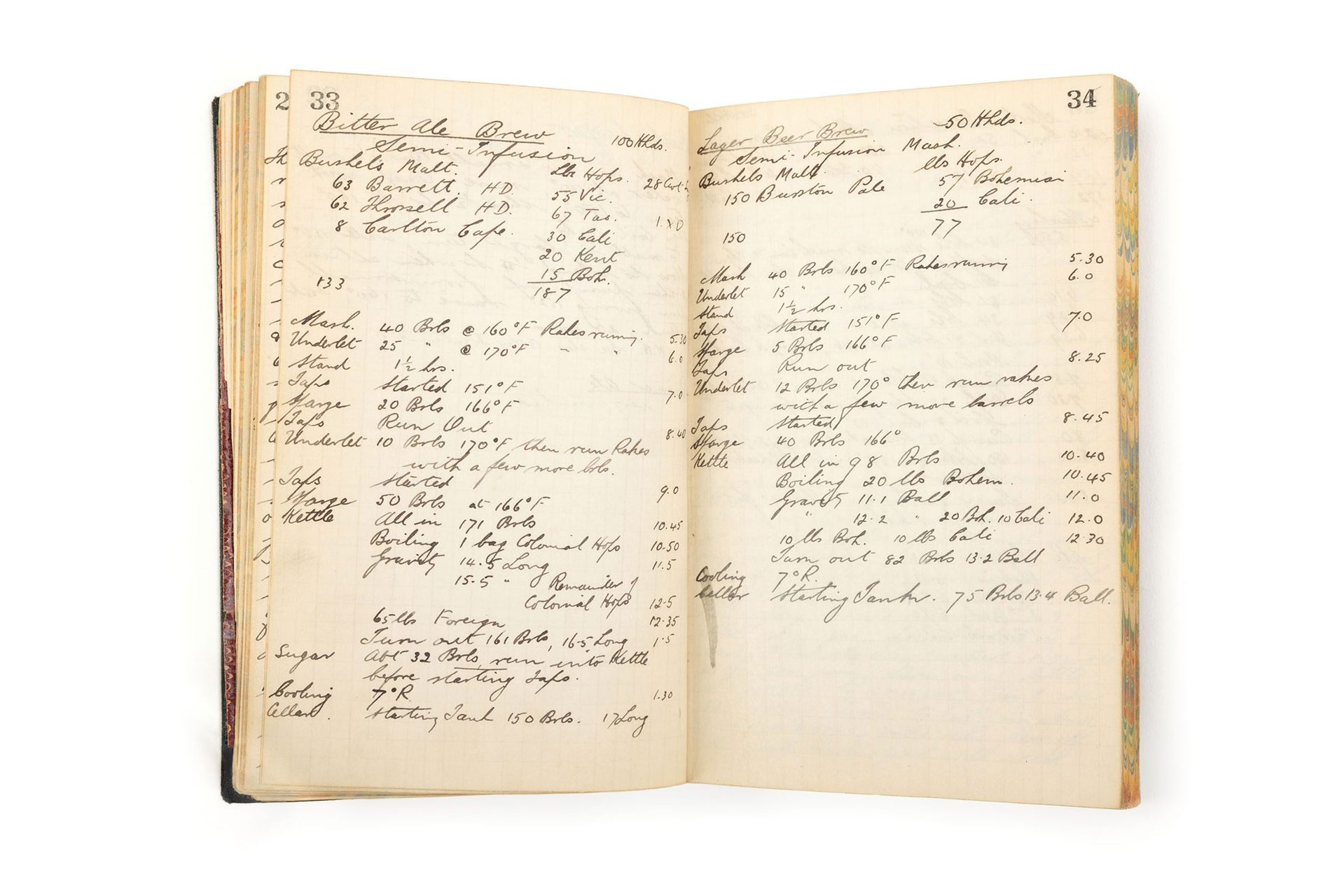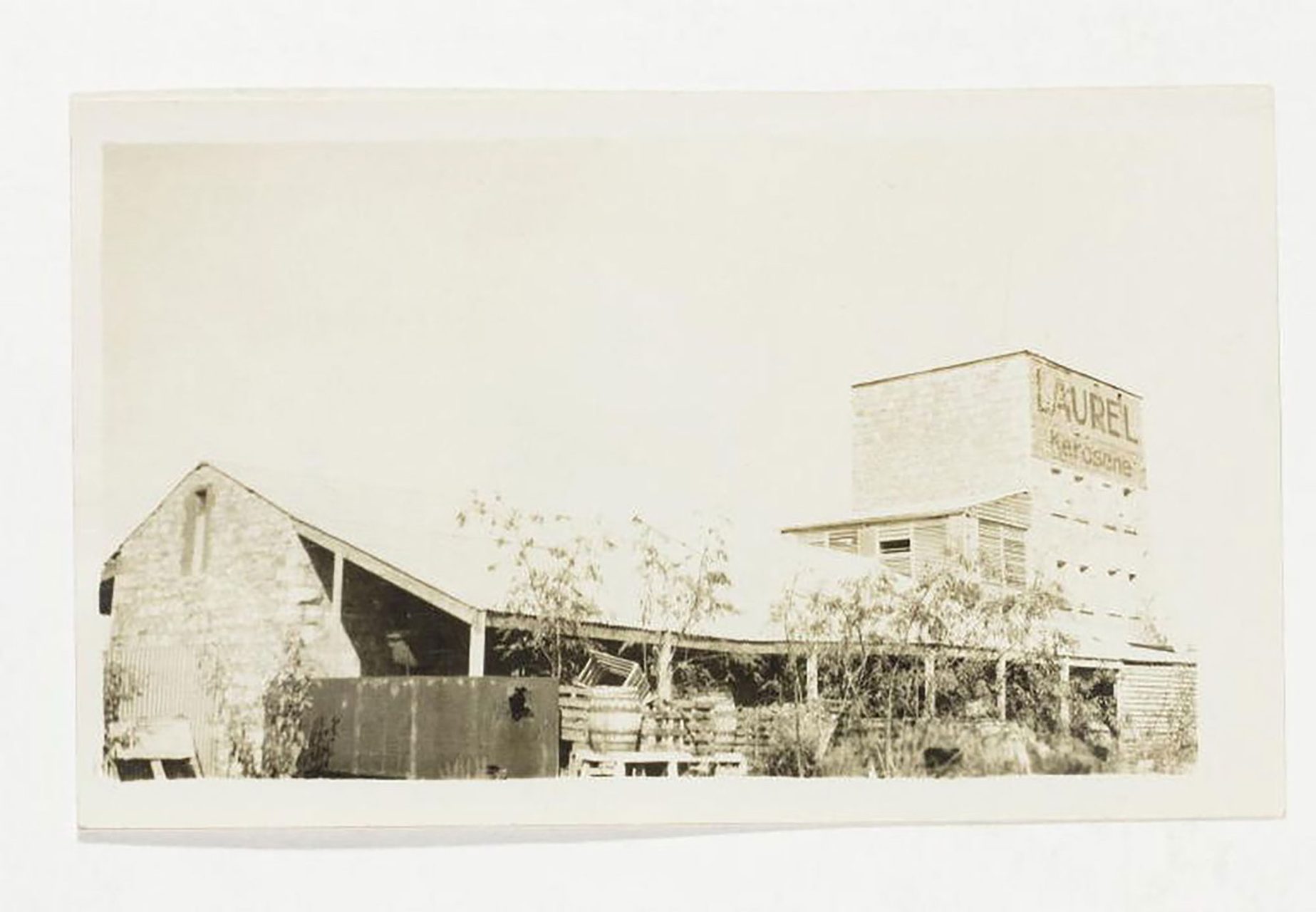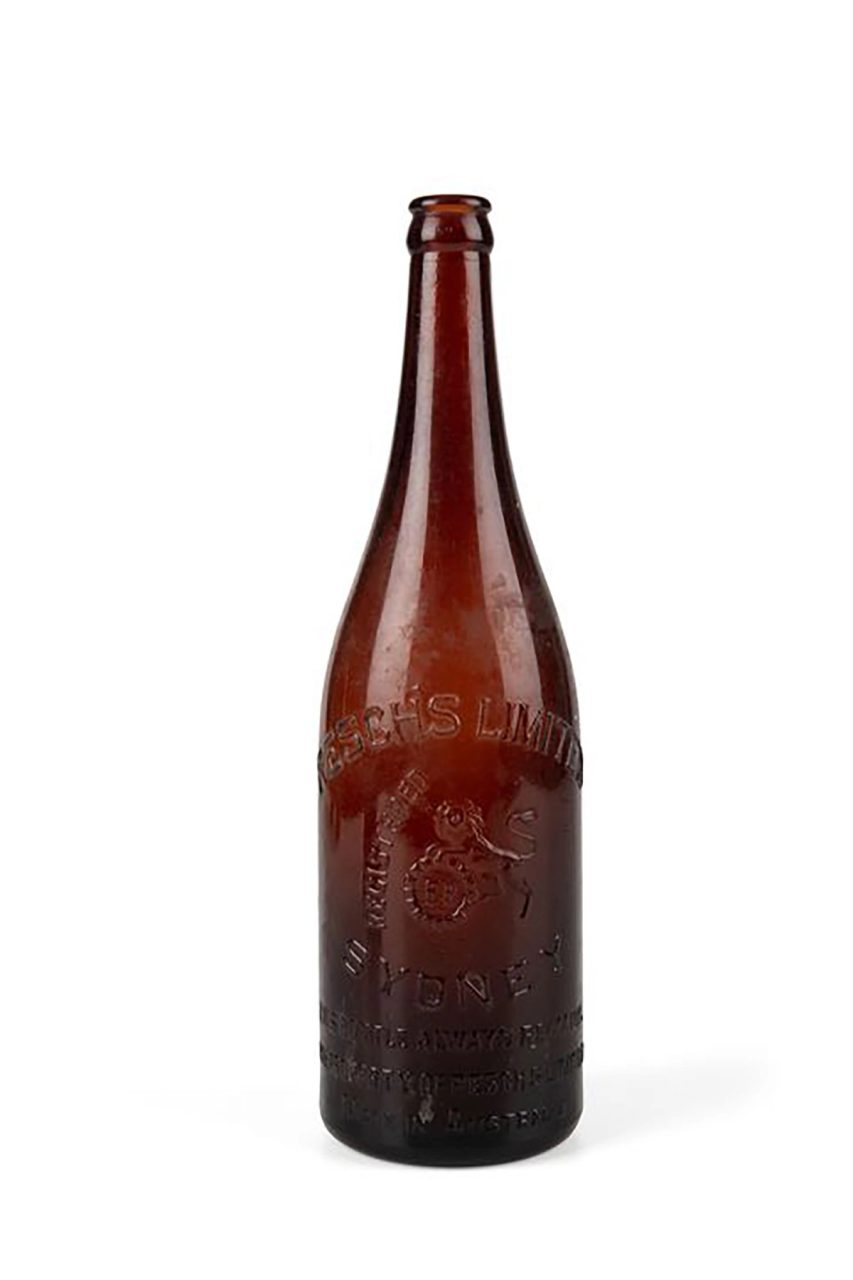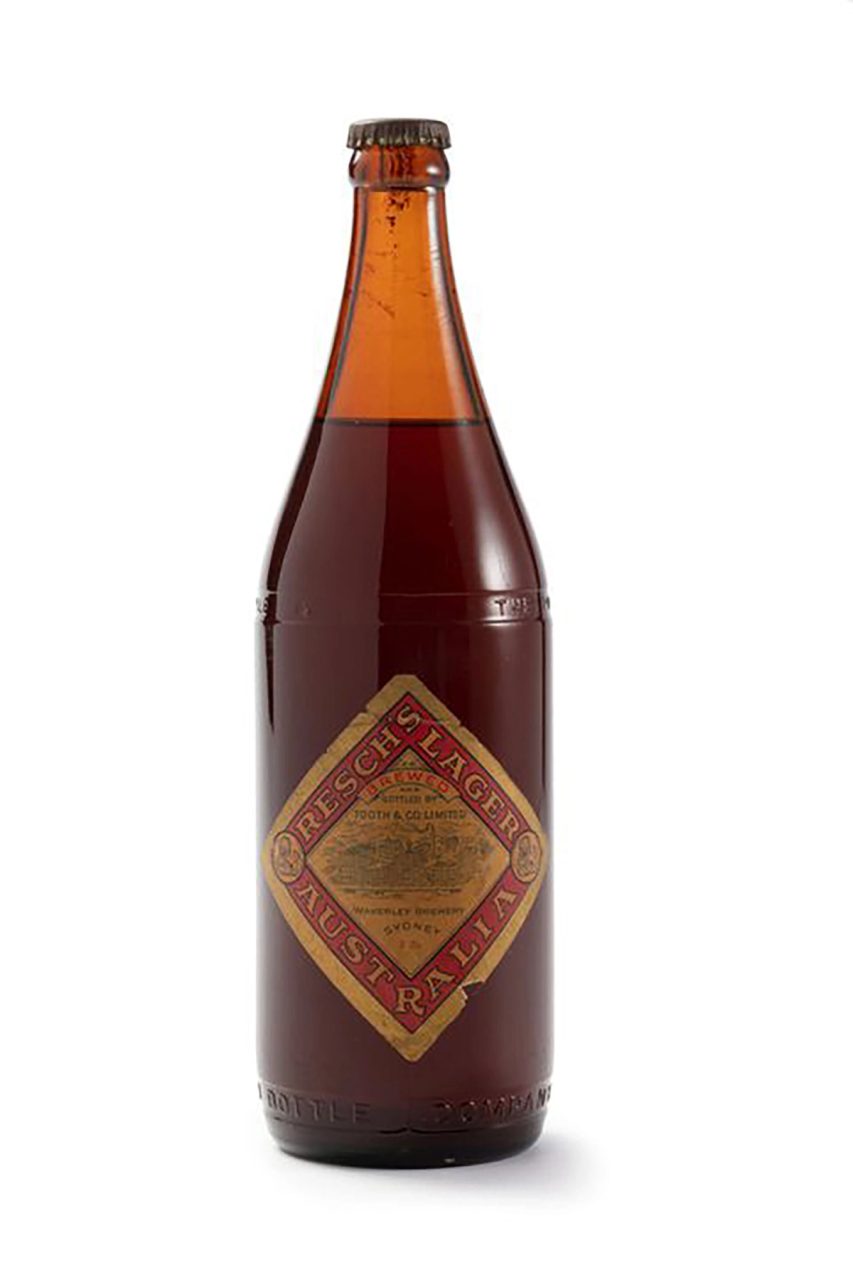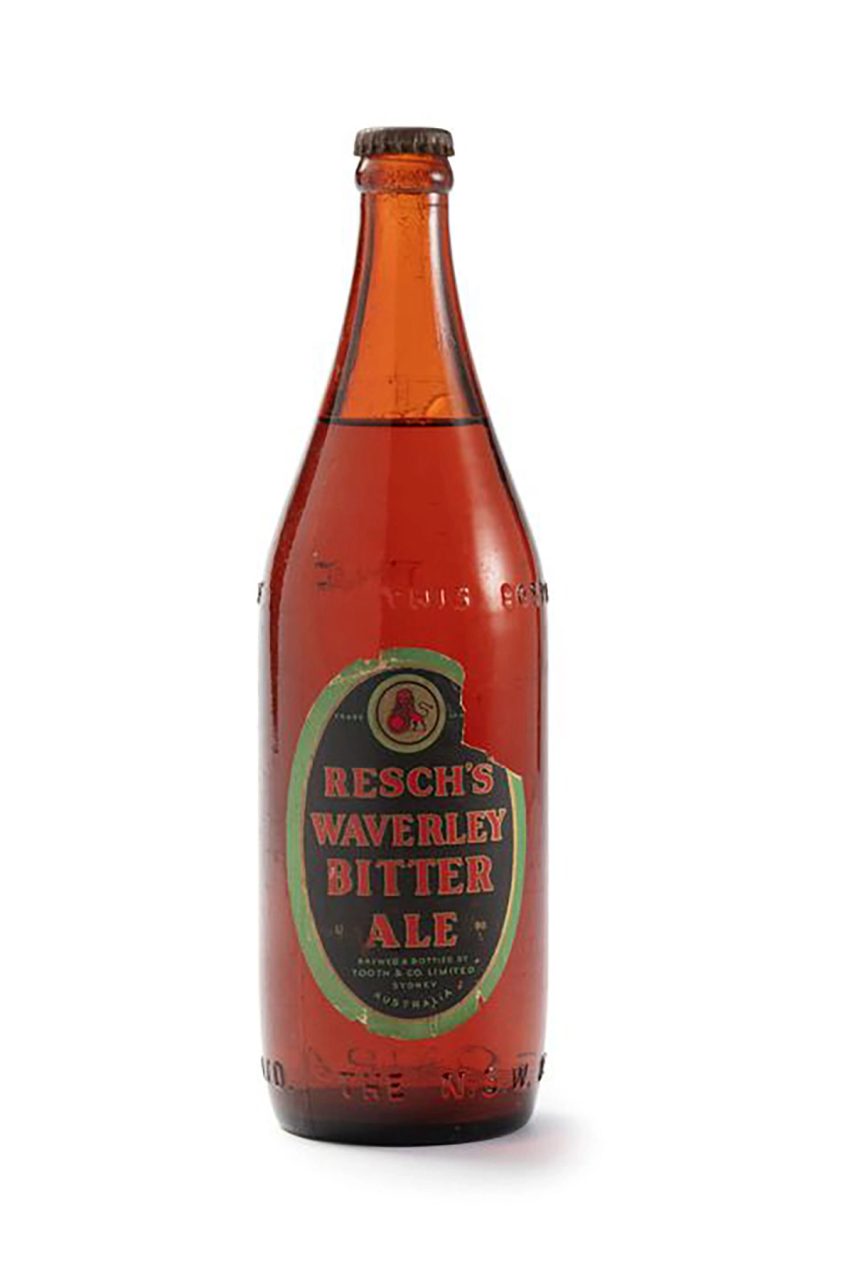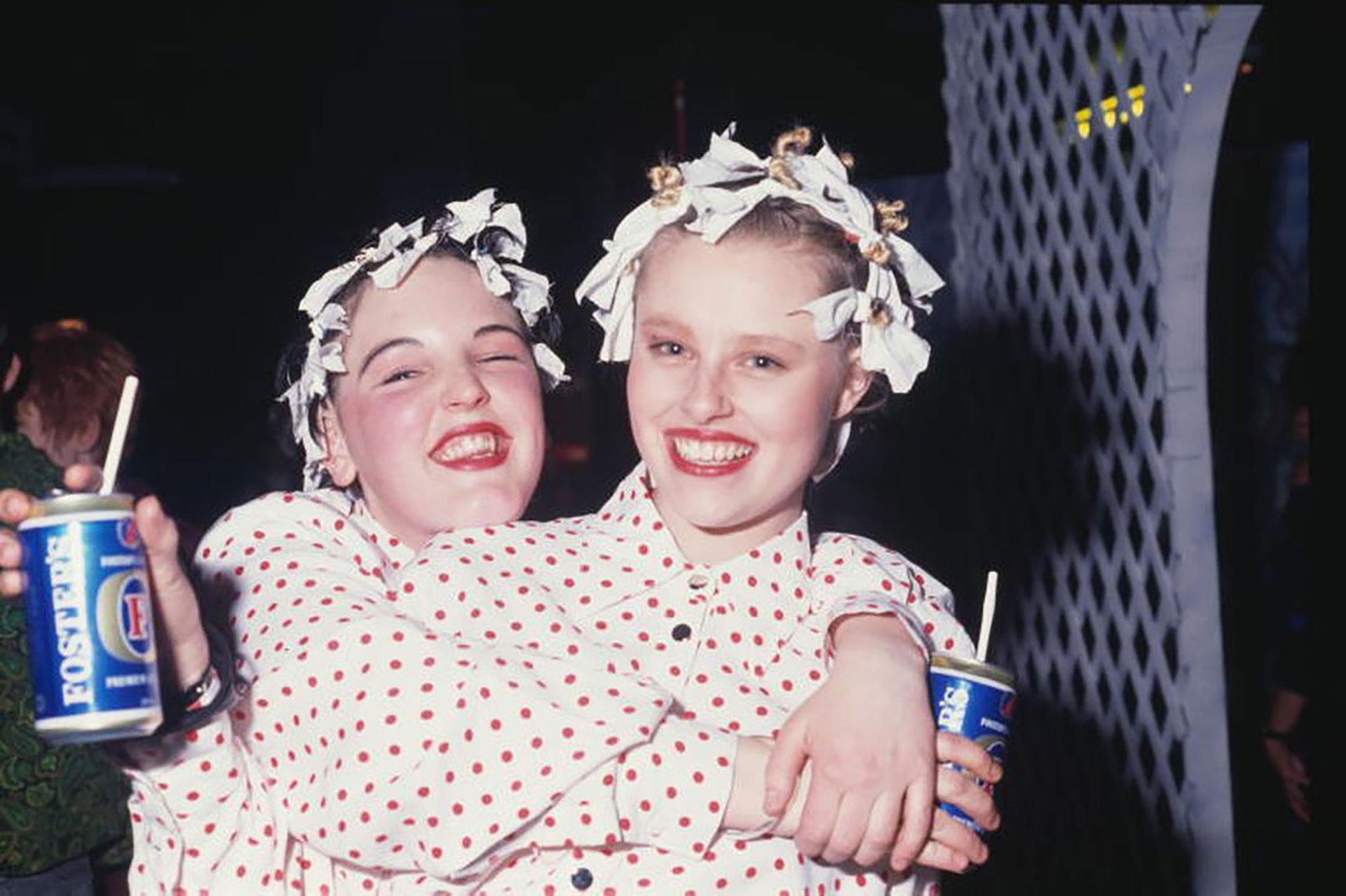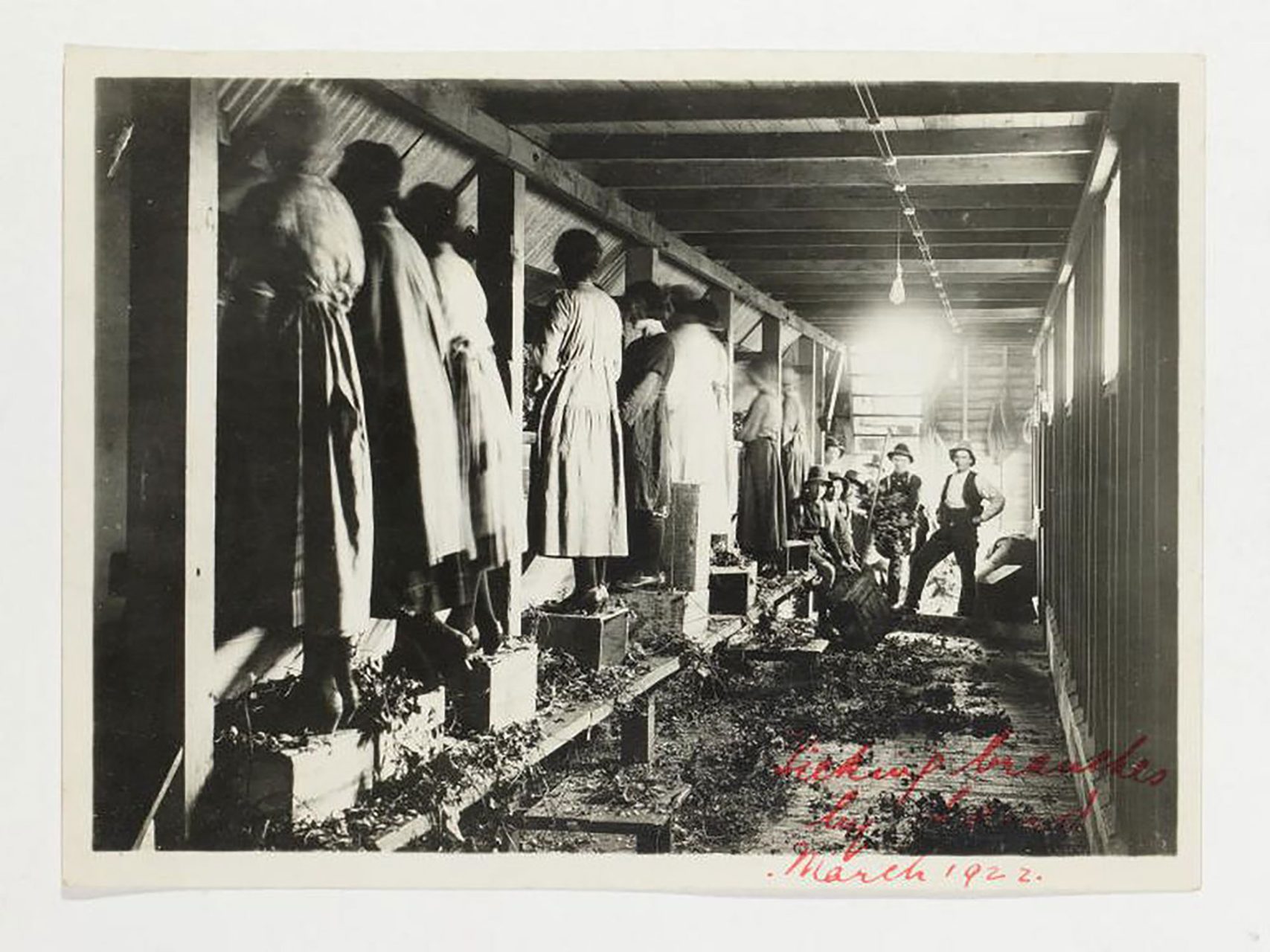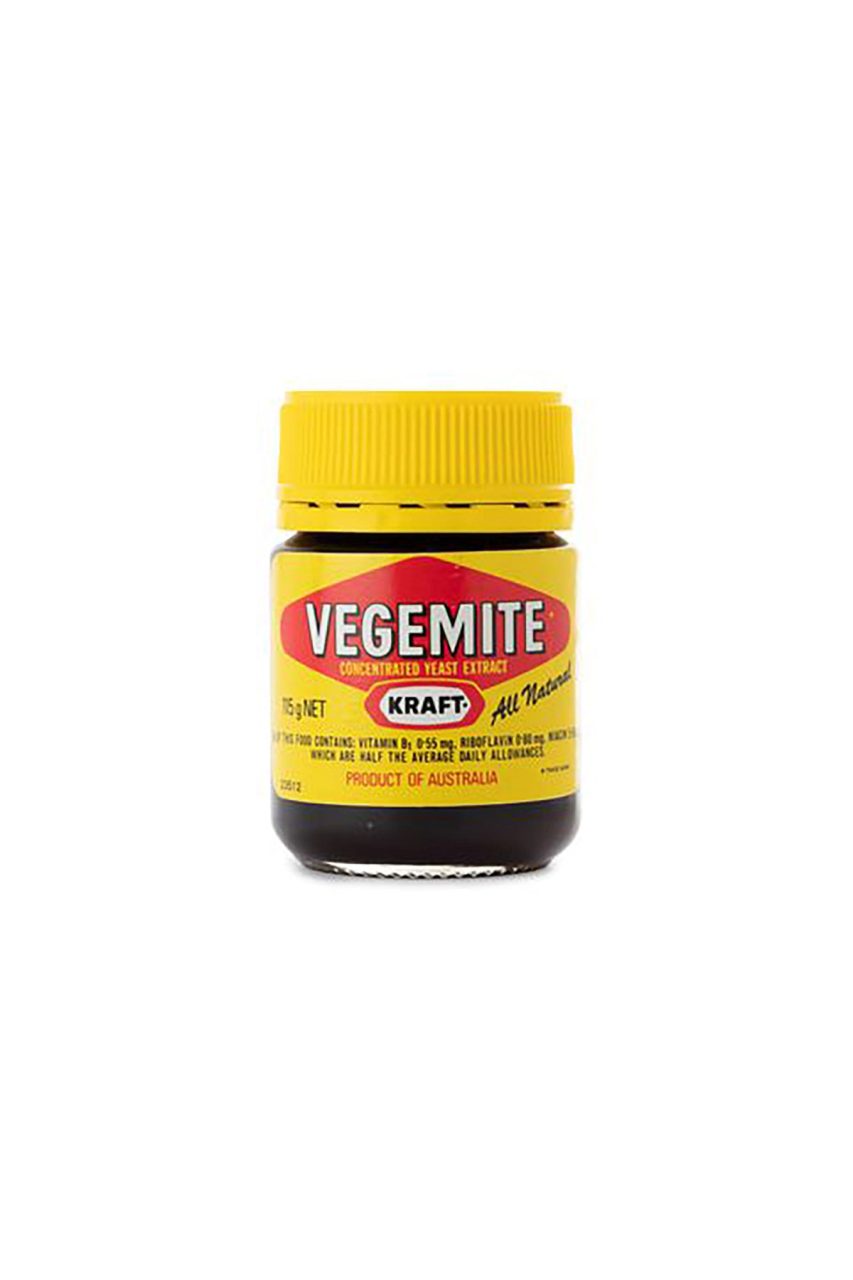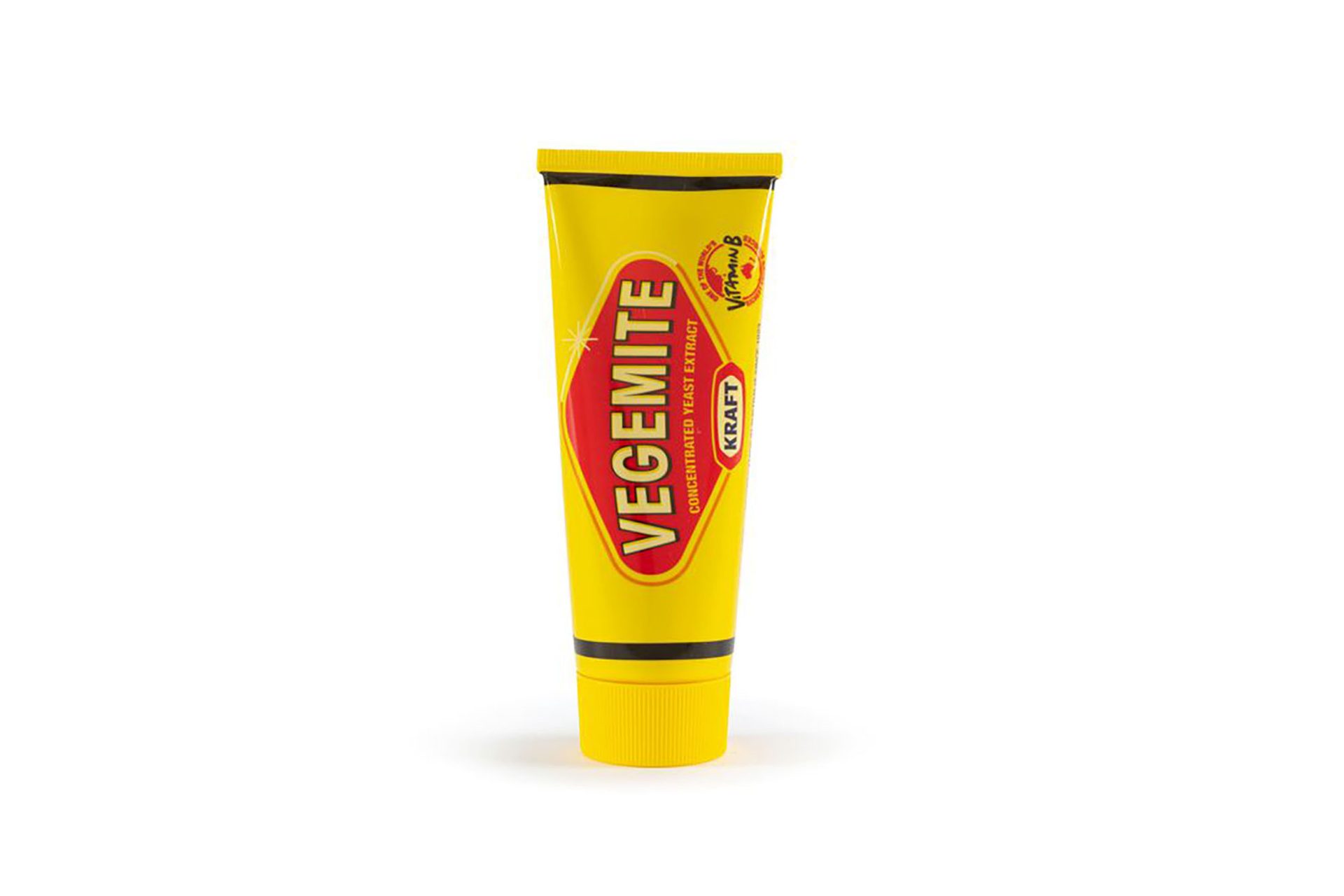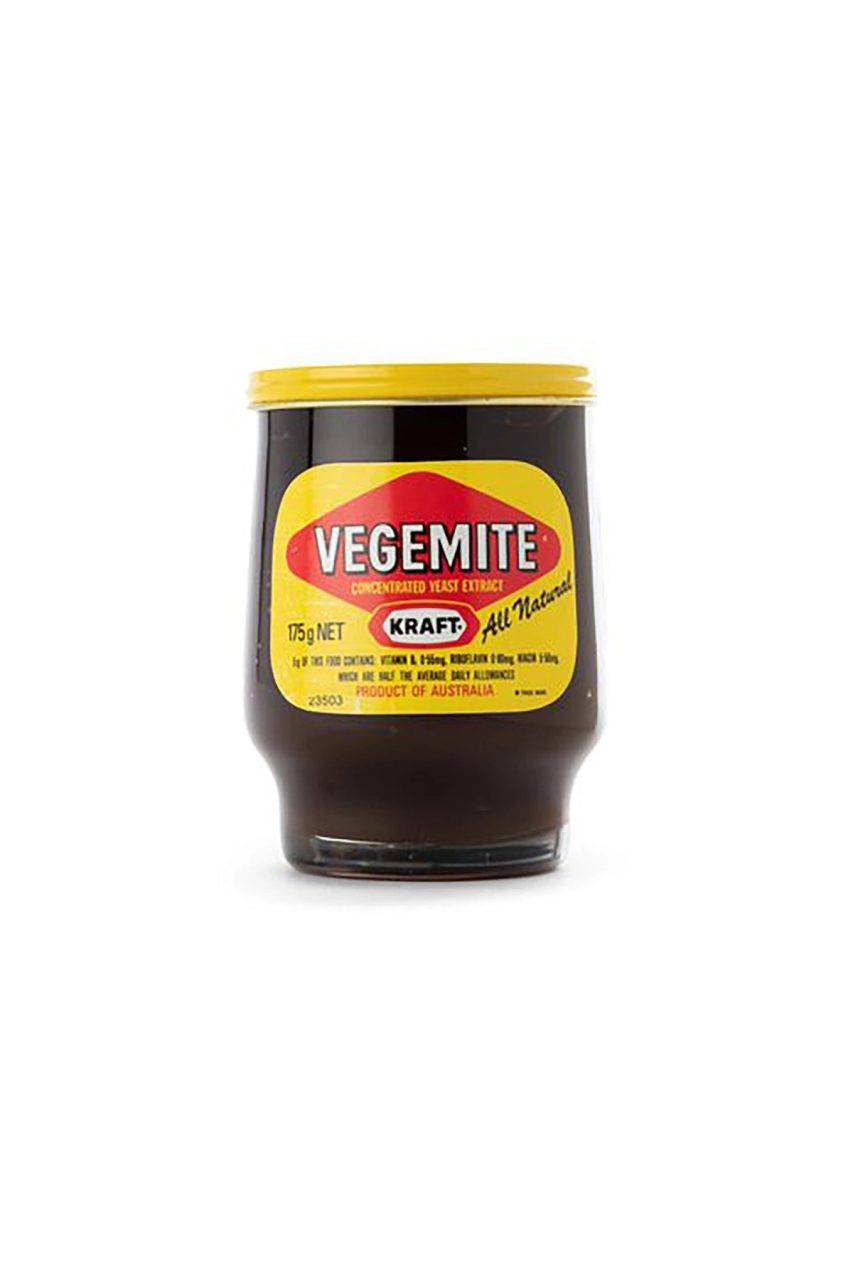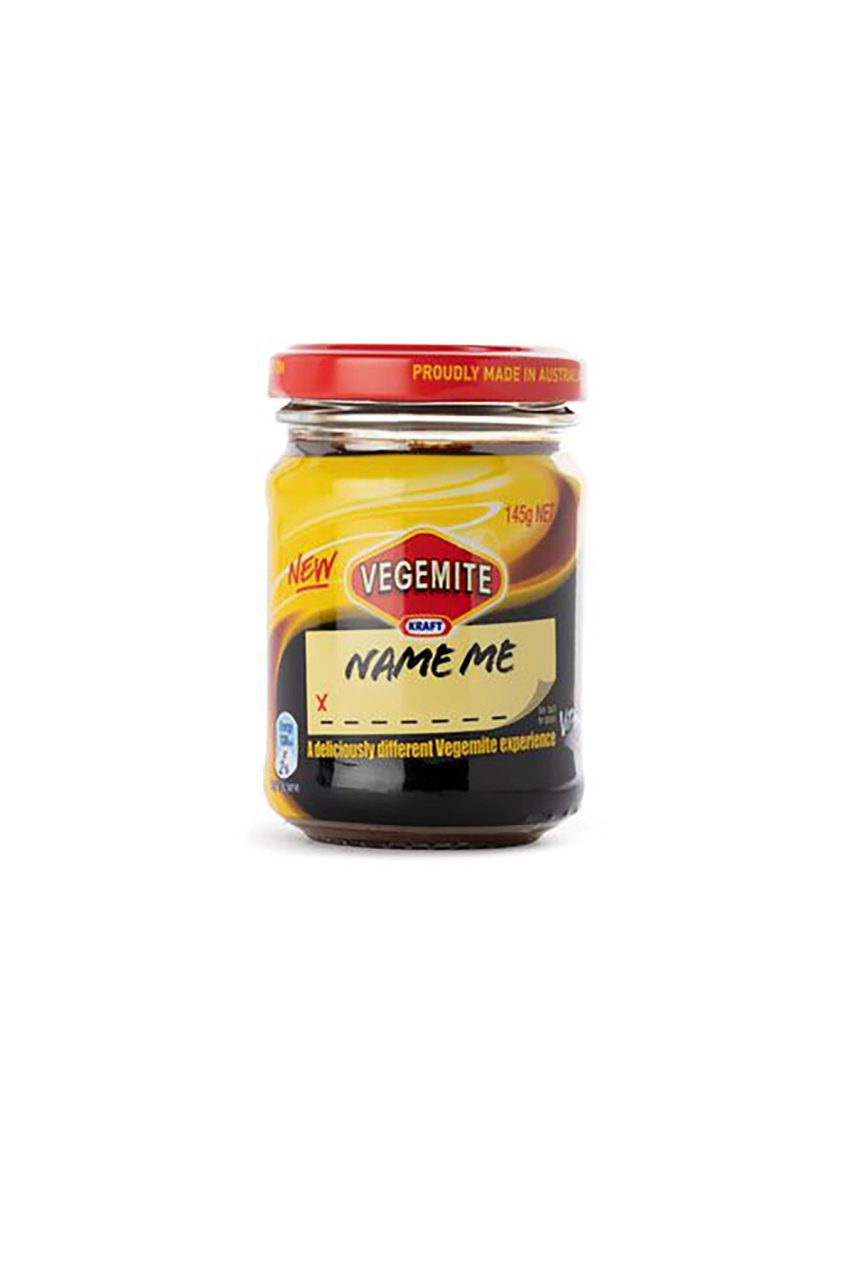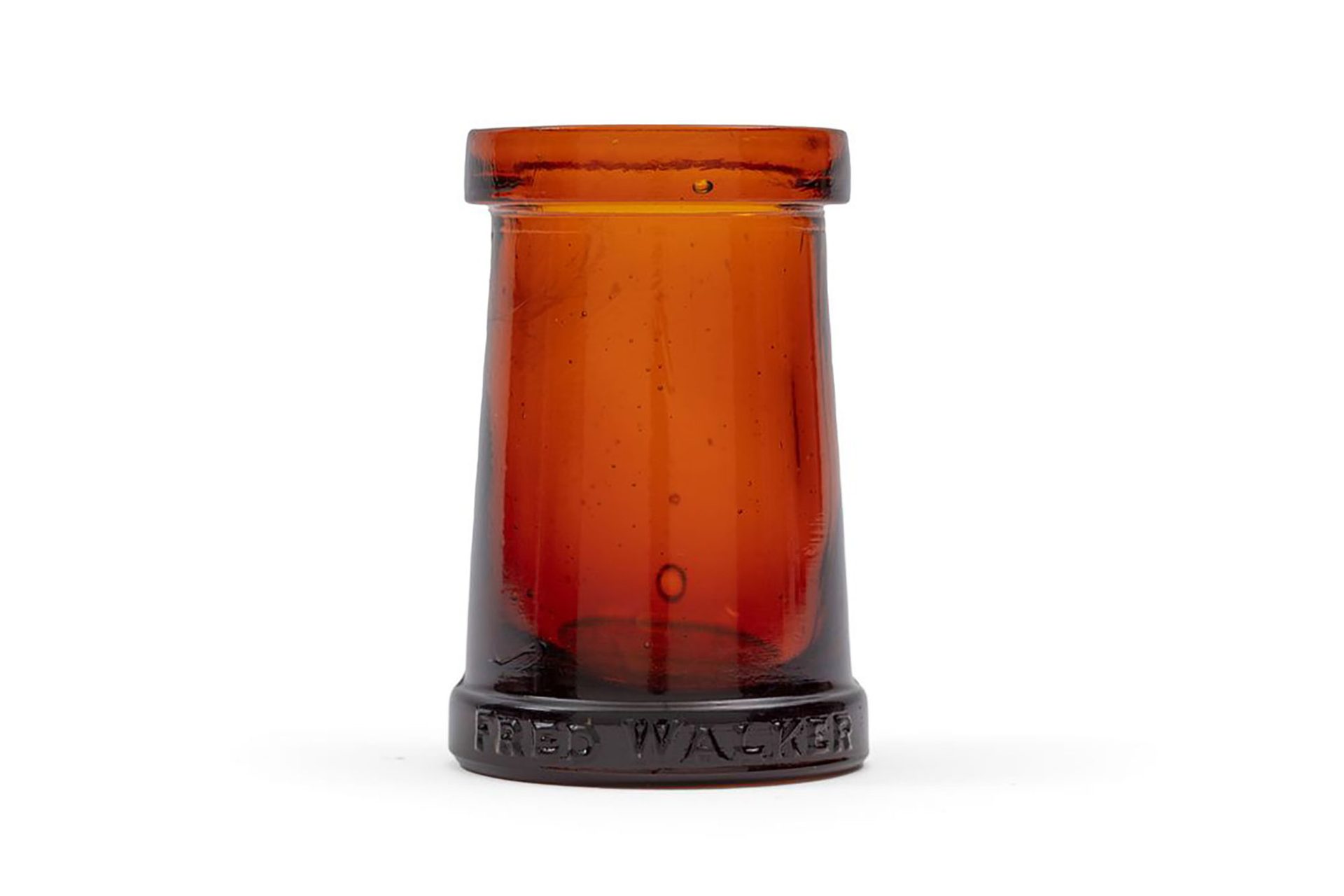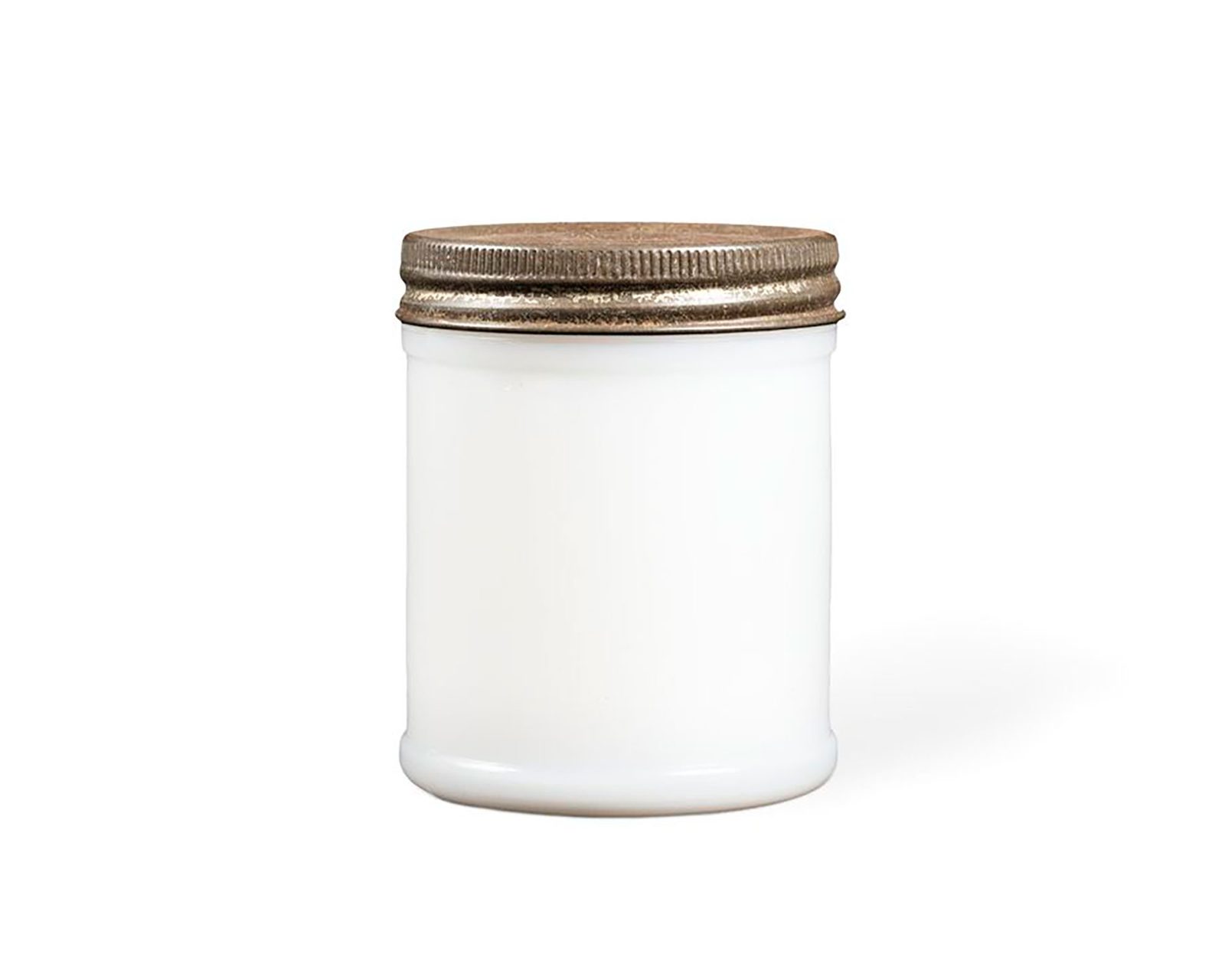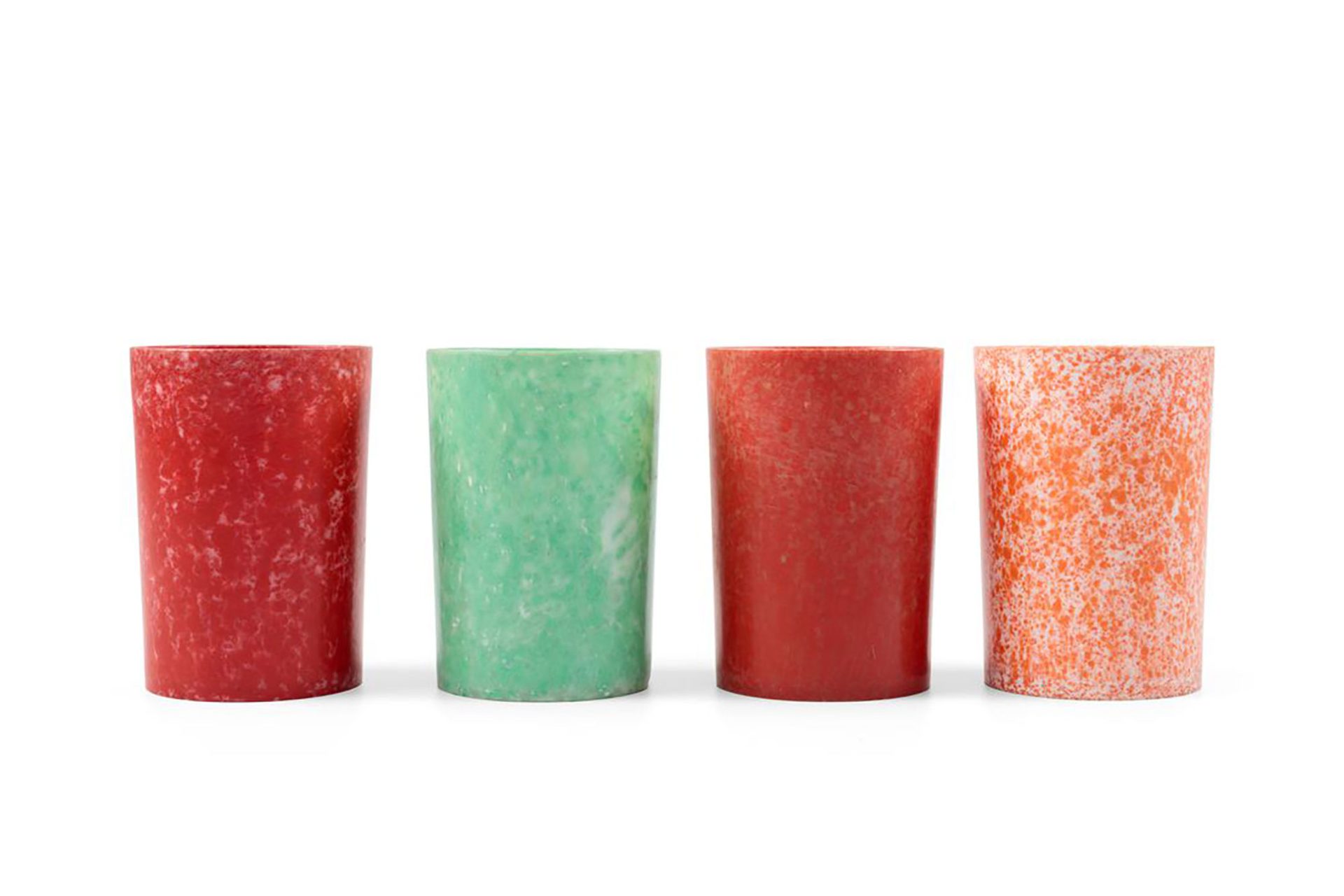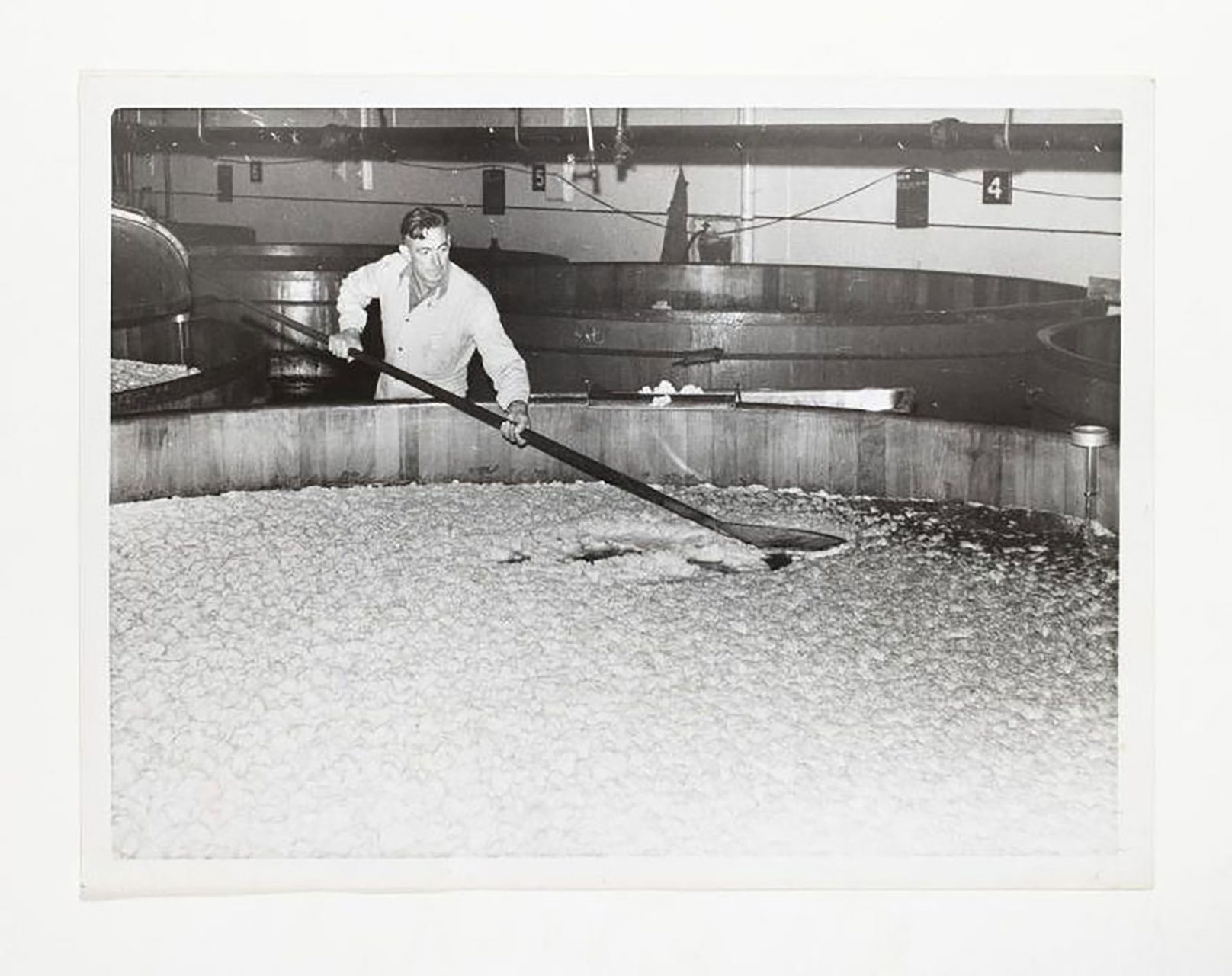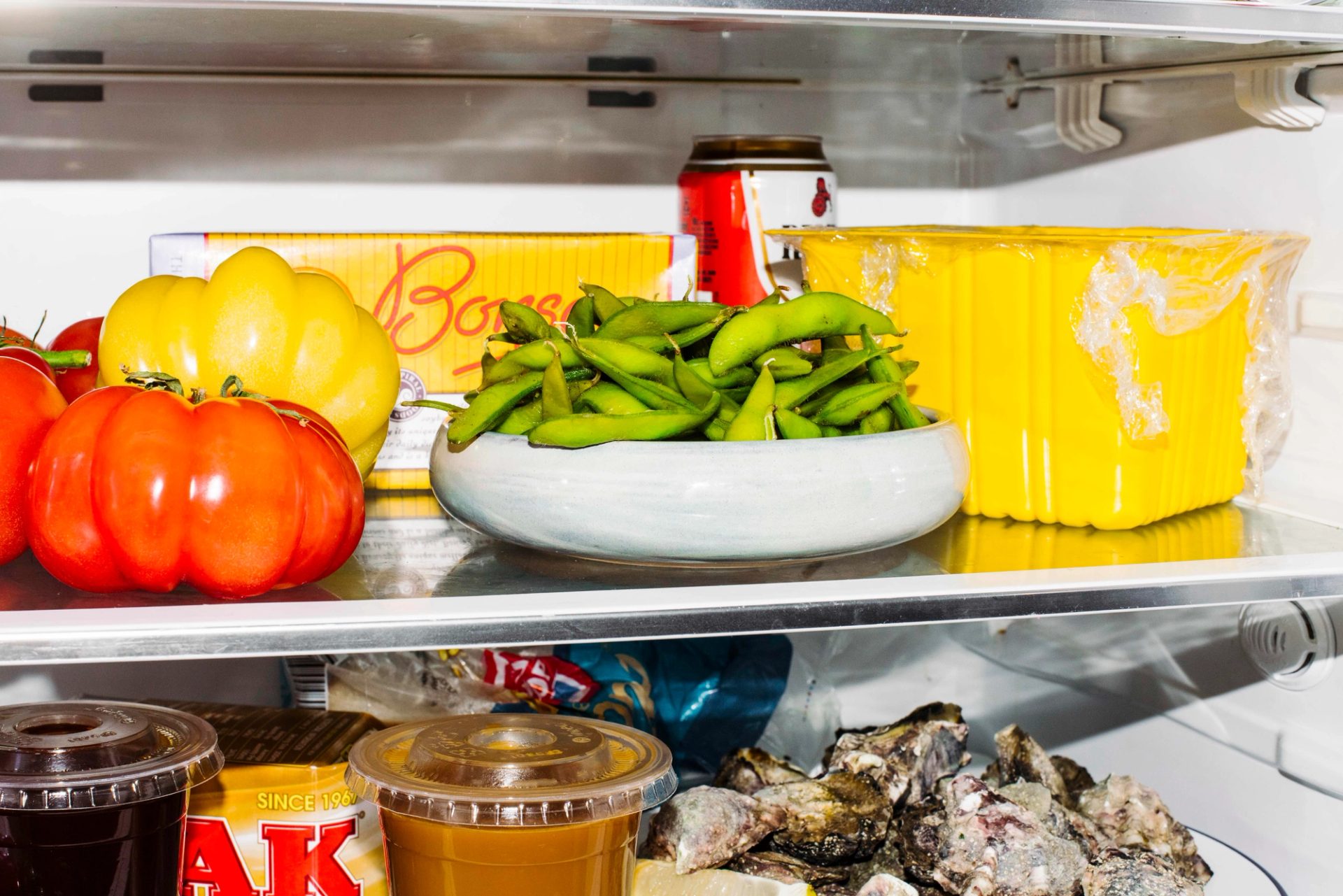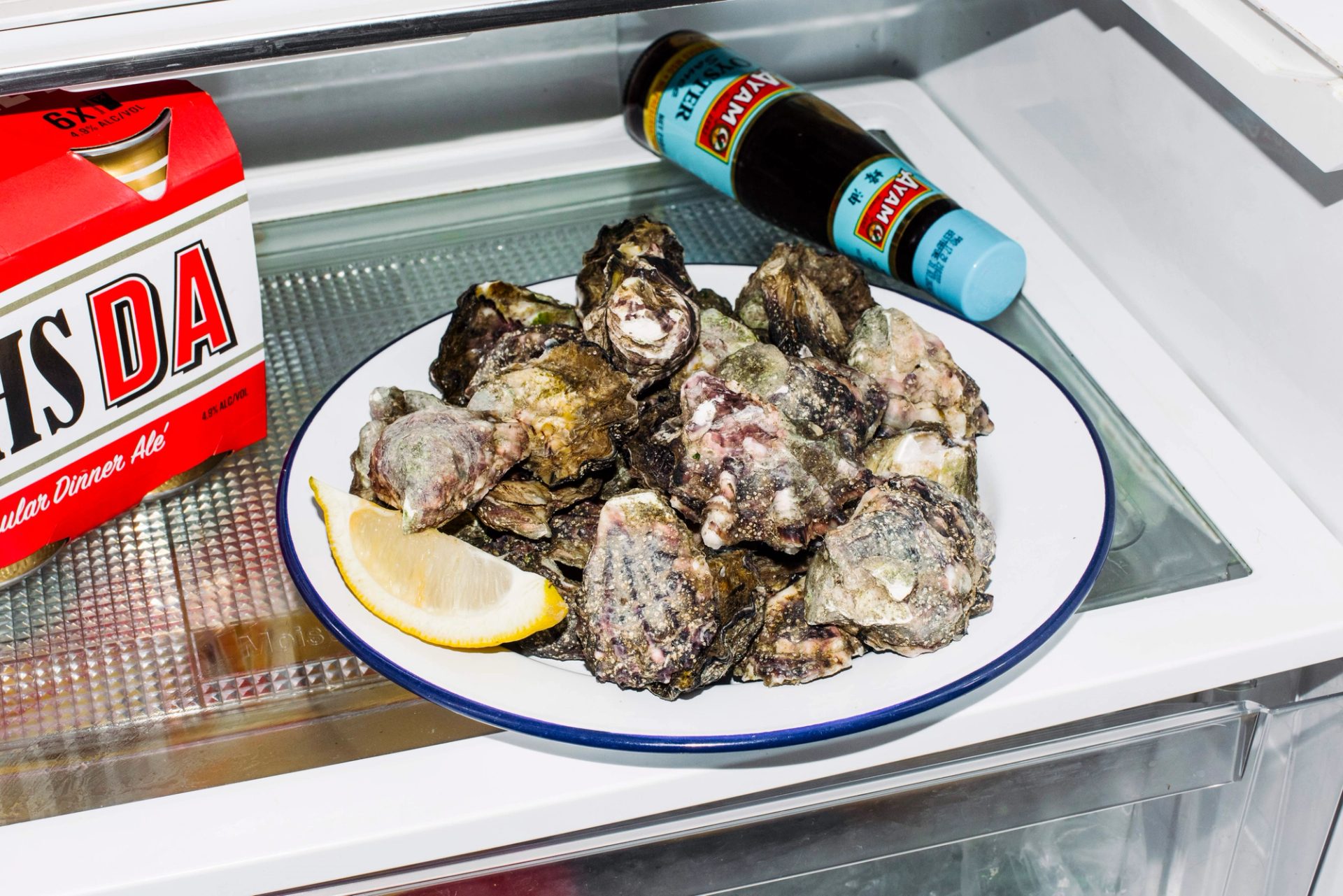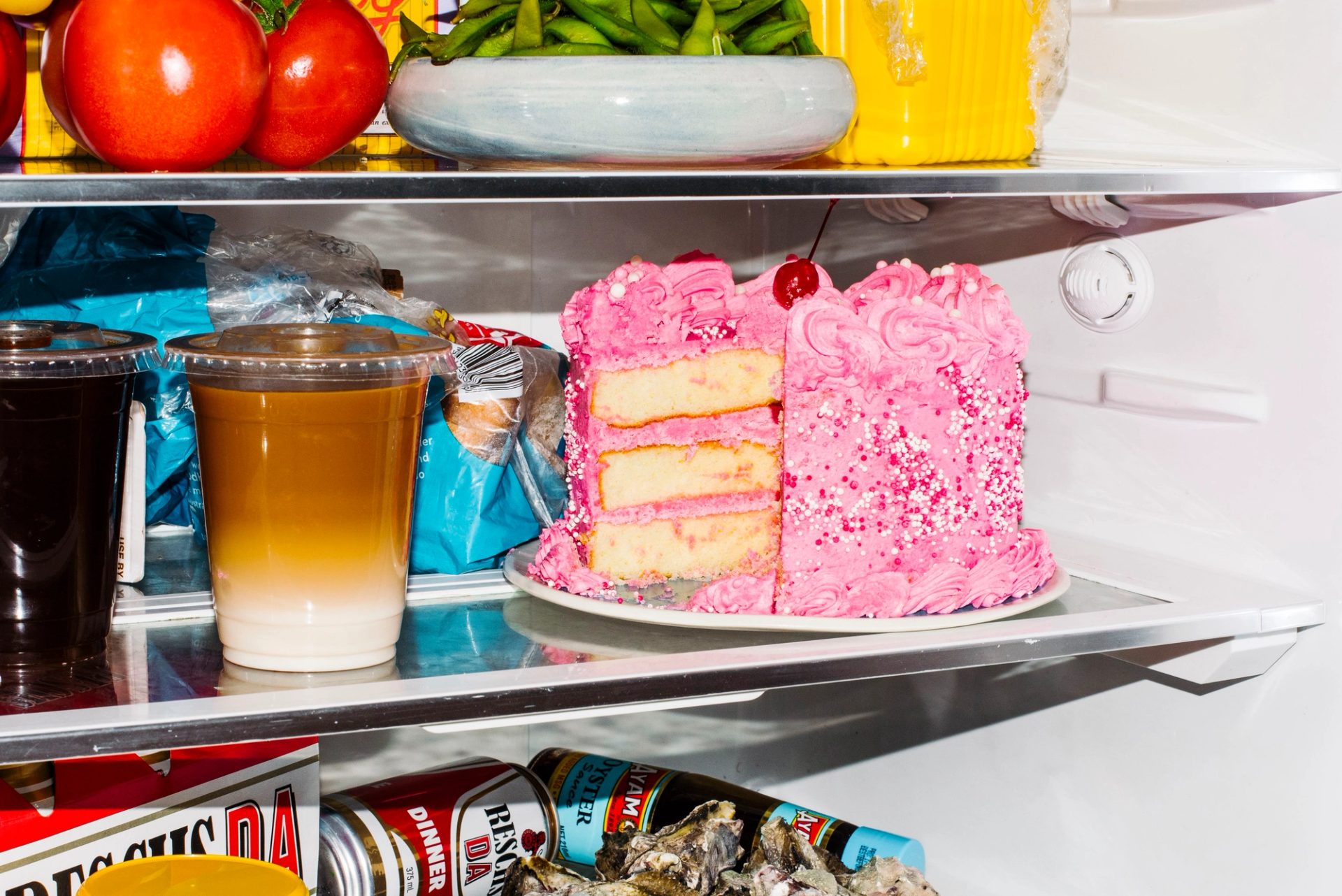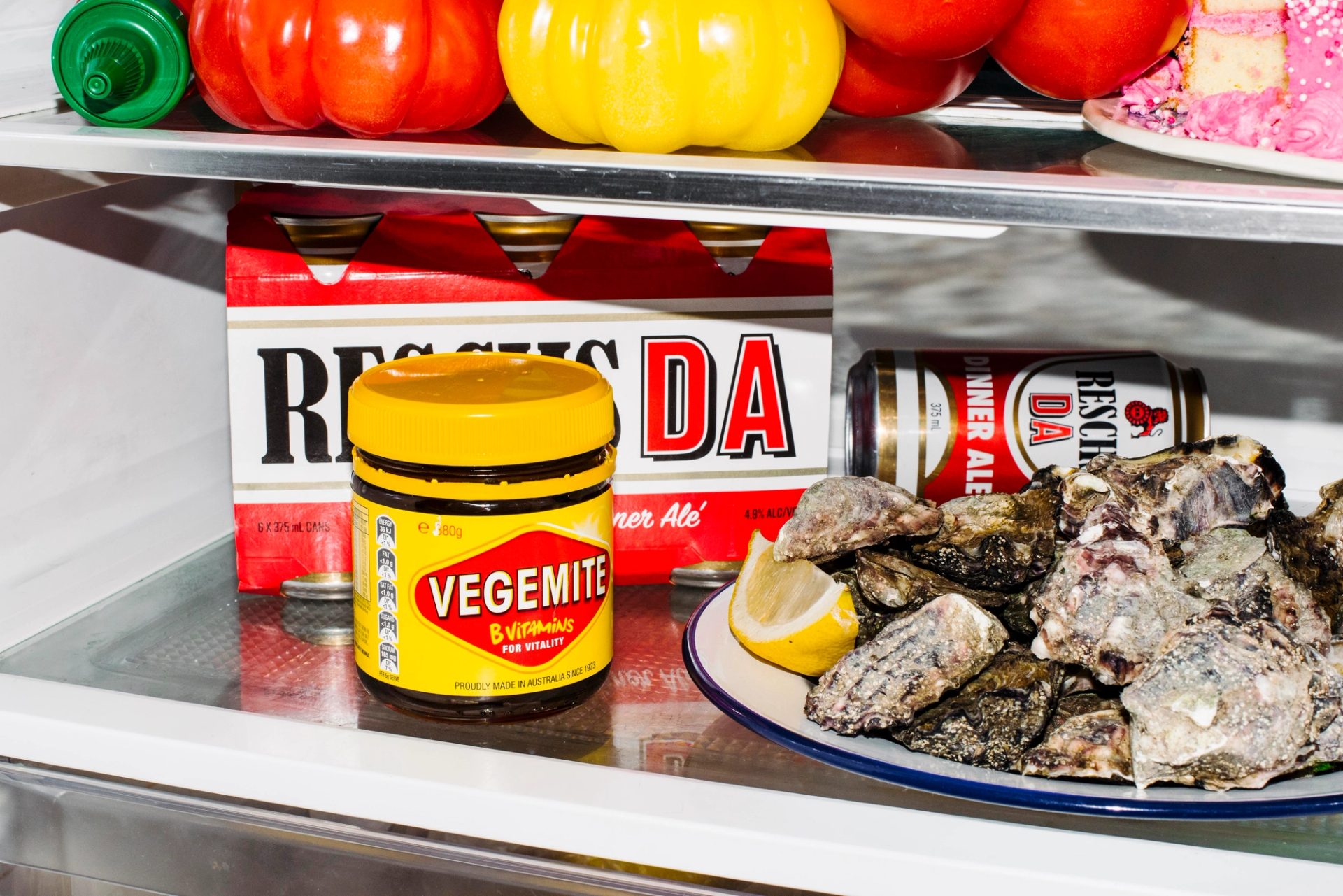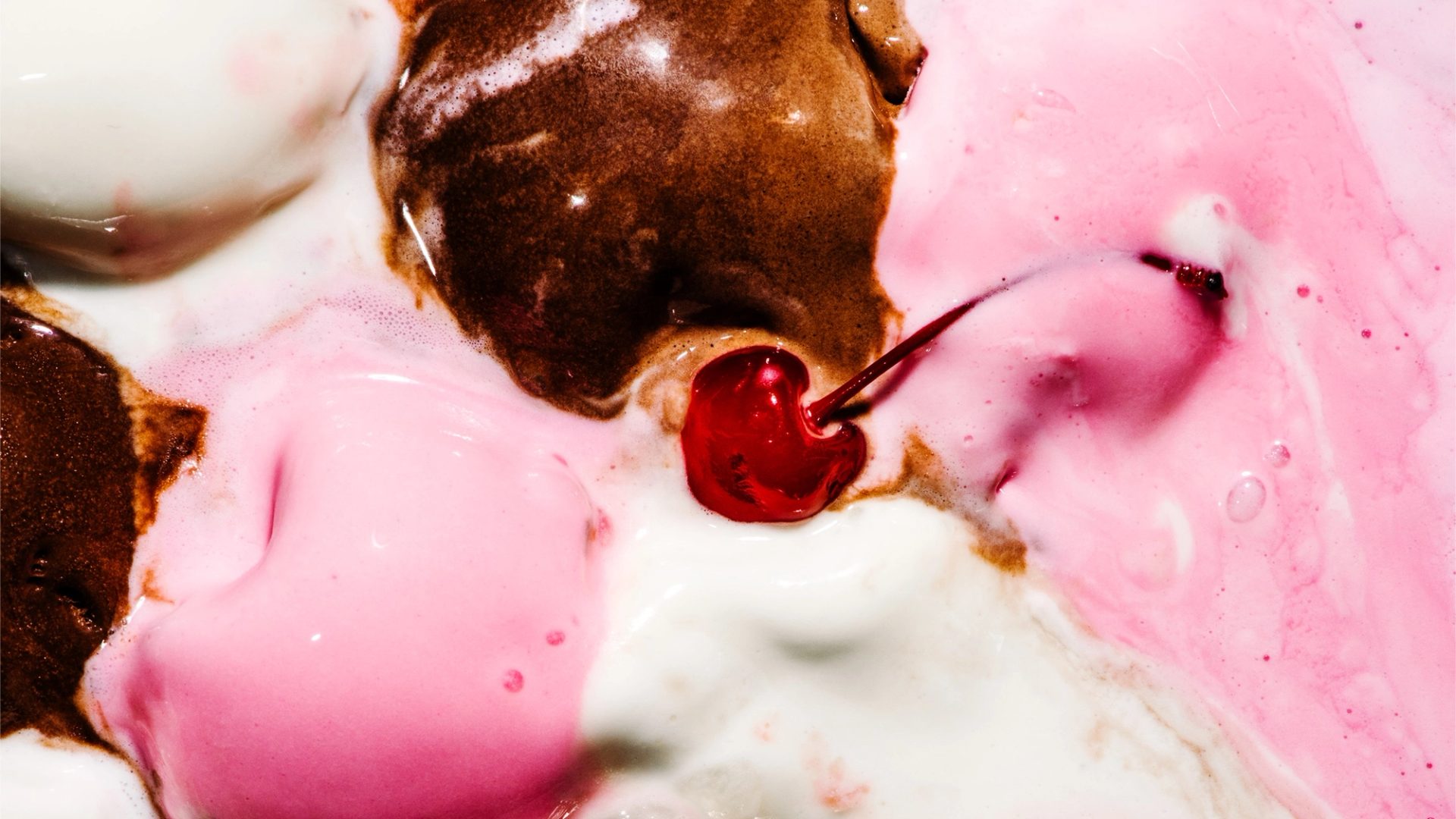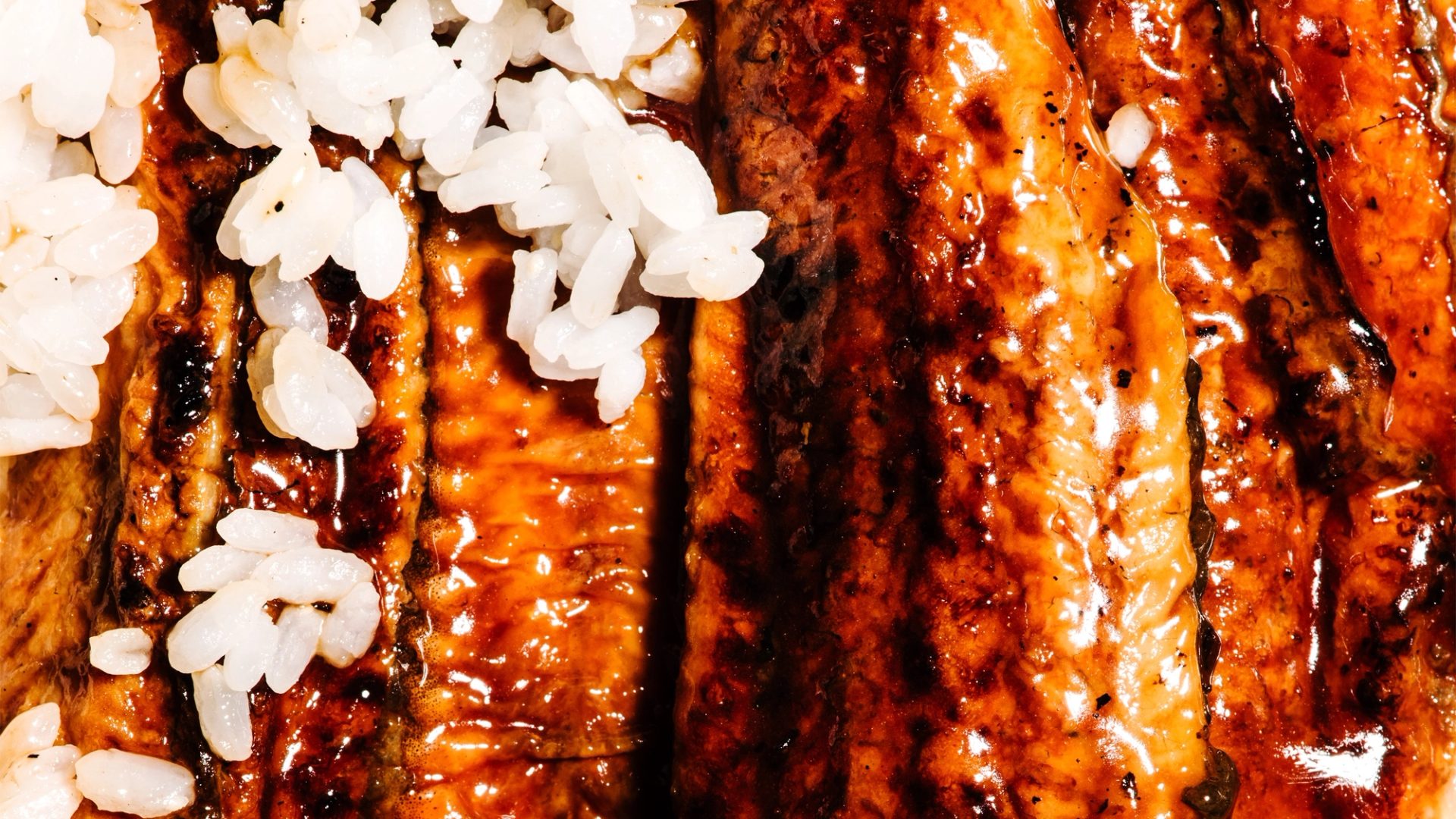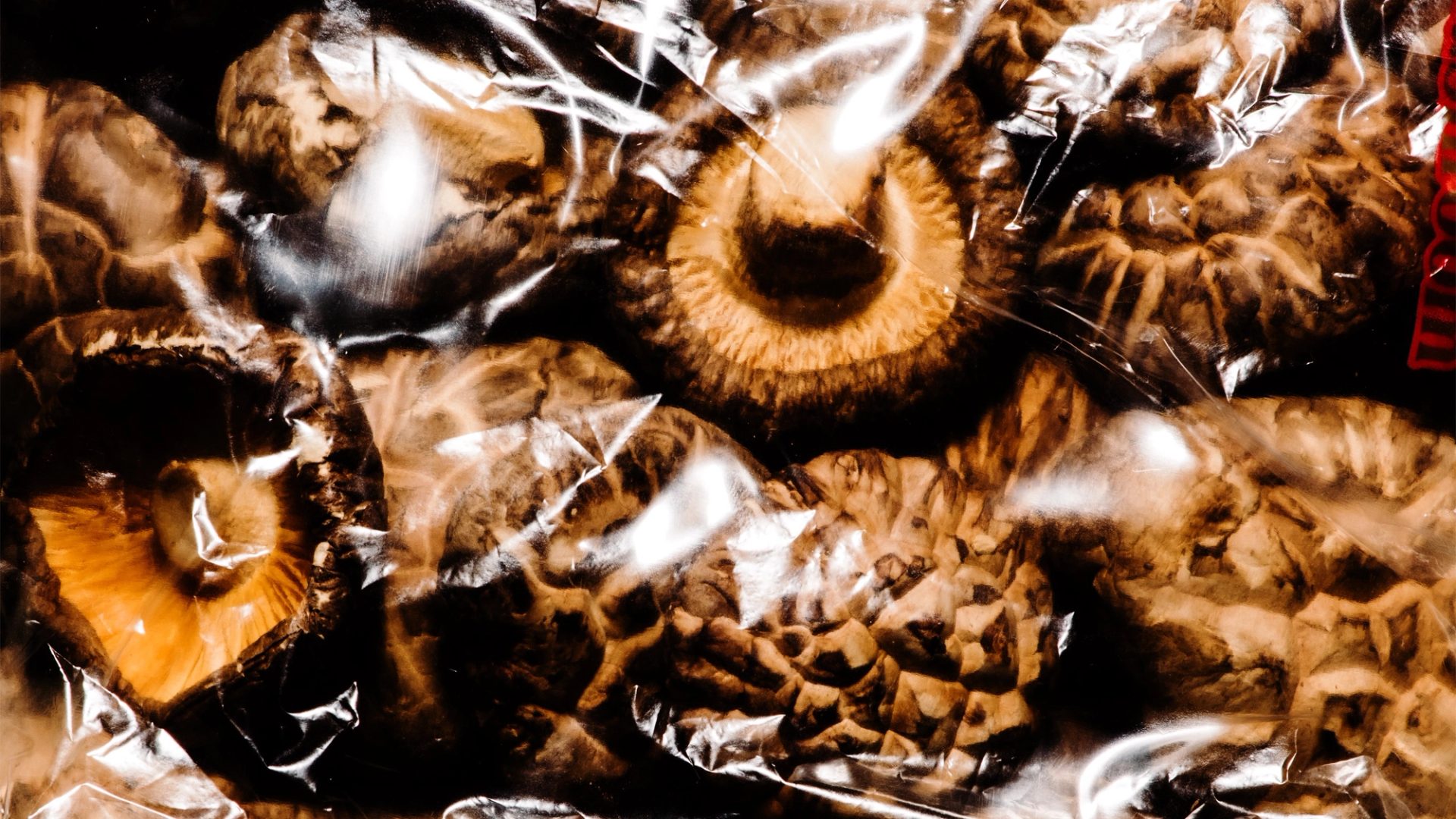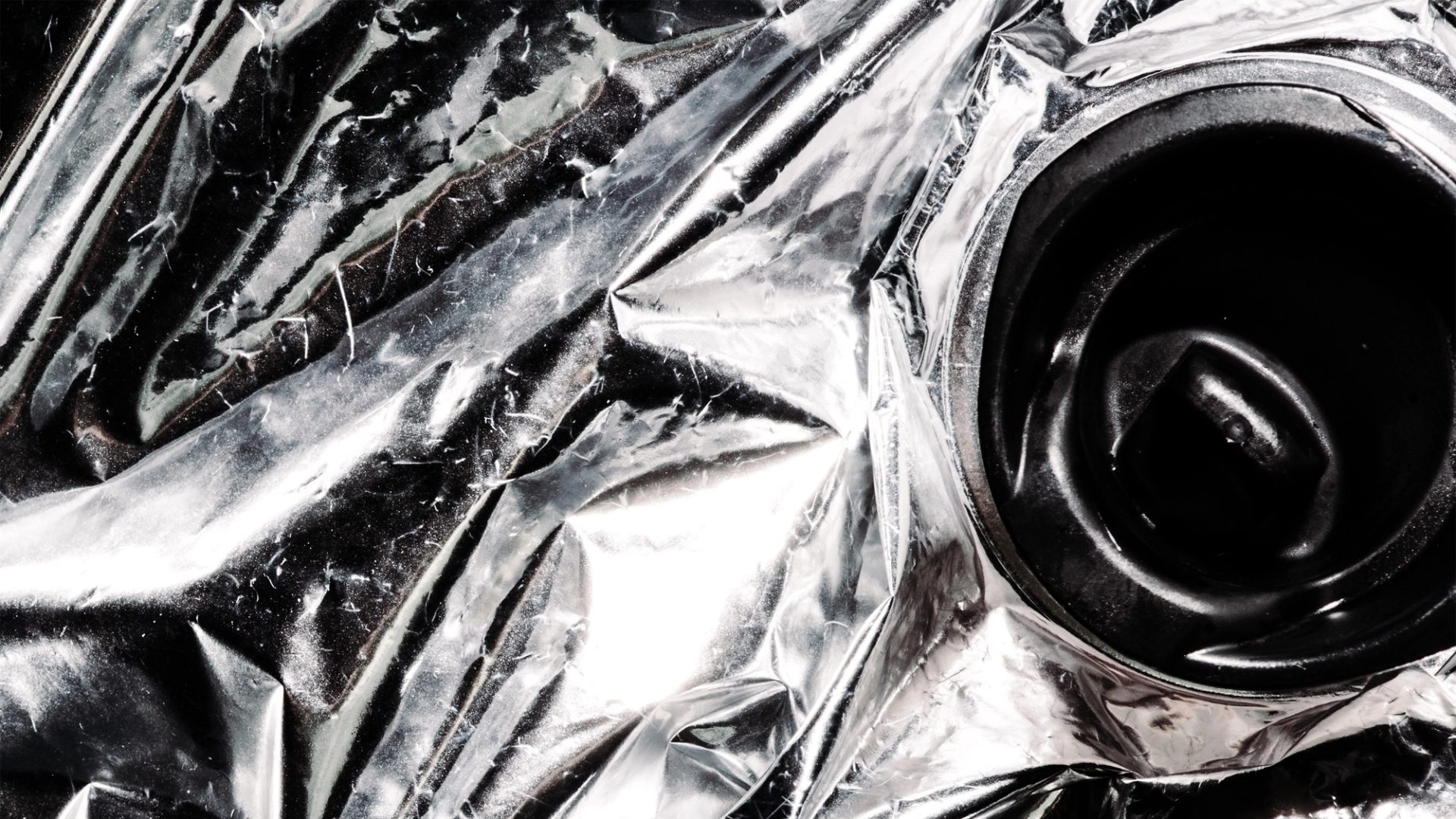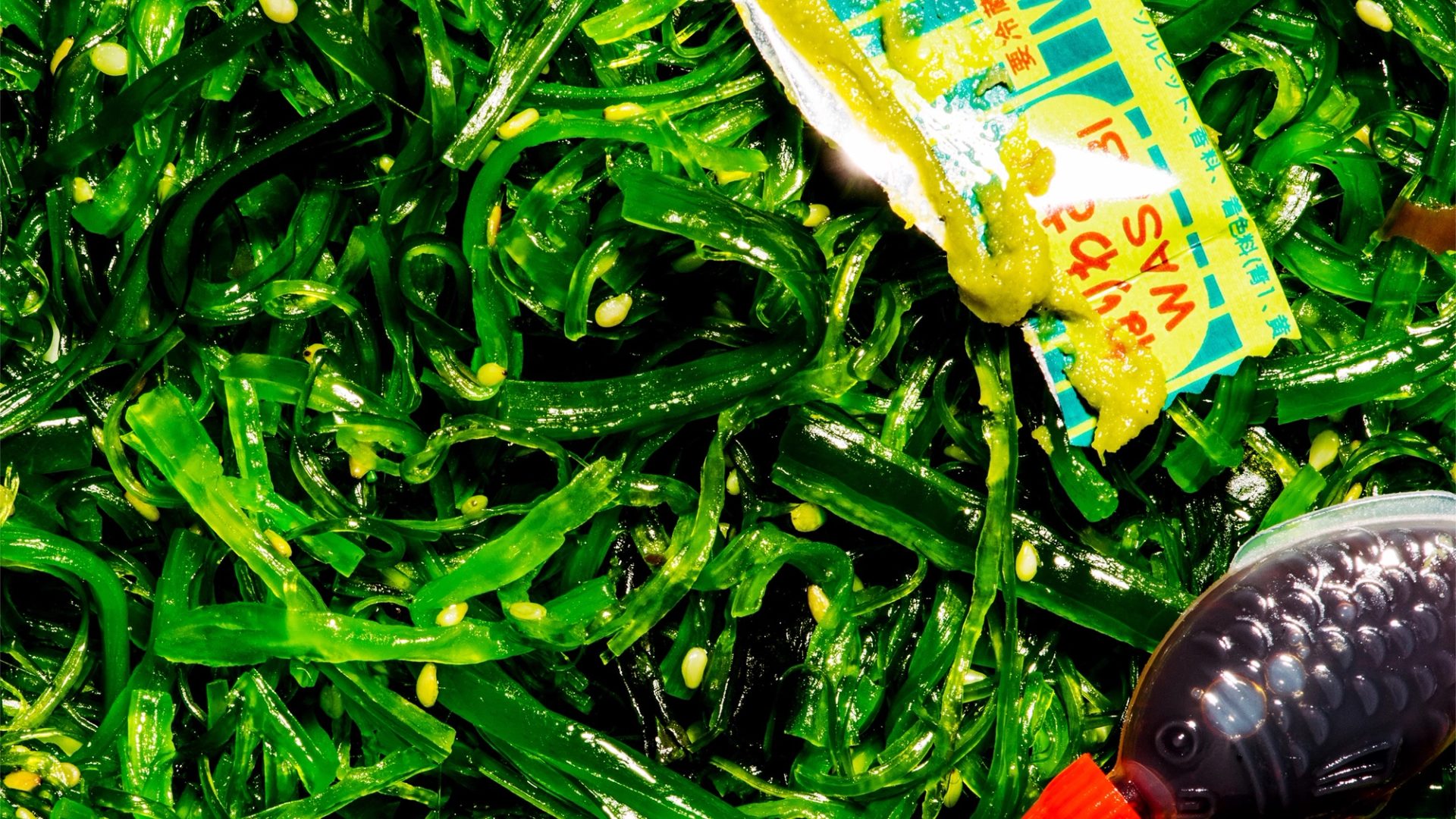Beer + Vegemite

Culinary Archive Podcast
A series from the Powerhouse with food journalist Lee Tran Lam exploring Australia’s foodways: from First Nations food knowledge to new interpretations of museum collection objects, scientific innovation, migration, and the diversity of Australian food.
Beer + Vegemite
Australian colonial history begins with beer: the Endeavour left England with 250 barrels on board. Beer reflects the changing fortunes of women; from our first female licensee to the 1960s feminist fight to allow women into public bars. Beer kept bubbling into politics, with Edmund Resch being thrown into a local internment camp when WWI broke, and Prime Minister Bob Hawke setting an ale-drinking world record in 1954. Plus, beer has even given us a national icon – Vegemite! Today, brewers like Sydney’s Wildflower are doing fascinating experiments with beer using native grains, wild yeasts and local flowers.
‘The fact that an unmarried ex-con – who was a woman – was allowed to run a pub was really quite remarkable.’
Transcript
Lee Tran Lam Powerhouse acknowledges the Traditional Custodians of the ancestral homelands upon which our museums are situated. We pay respects to Elders, past and present, and recognise their continuous connection to Country. This episode was recorded on Gadigal, Turrbal, Jugera, Kombumerri and Wurundjeri Country. My name is Lee Tran Lam, and you're listening to the Culinary Archive Podcast, a series from Powerhouse Museum.
Powerhouse has over half a million objects in its collection; from vintage beer labels from the 1800s, to Vegemite tubes from the 2000s, to a Mambo poster of the Australia beer tree, the collection charts our evolving connection to food. The museum's culinary archive is the first nationwide project to collect the vital histories of people in the food industry, such as chefs, writers, and restaurant owners who've helped shape Australia's taste and appetites. Today, we're talking about brewer’s yeast, the stuff that powers Beer and Vegemite.
Topher Boehm You know, this is a product that's been on the earth for many thousands of years.
Clare Wright The fact that an unmarried ex-convict, who was a woman, was allowed to run a pub was really quite remarkable.
Paul van Reyk In the late 19th century, a German chemist discovers you can get this brewer’s yeast. But have you ever eaten yeast? It's not especially palatable.
Claudia Moodoonuthi My style of Vegemite, definitely not Tom Hanks’ style. That was just too much [laughs].
LTL Australian colonial history begins with beer. The Endeavour left England with 250 barrels on board and from 1797 onwards, the drink also reflected the changing fortunes of women: from Sarah Bird becoming Australia's first female licensee, to the 1960s feminist fight to allow women in public bars.
Beer has always bubbled over into politics, with Reschs owner Edmund Resch thrown into a local internment camp when World War I broke. He was punished for his German roots, despite living here since age 16. Politicians love to be associated with beer. Prime Minister Bob Hawke set an ale-drinking world record in 1954 and has a craft beer named after him – and so does the current Prime Minister, Anthony Albanese.
Beer has given us a national icon, Vegemite, which gets its salty flavour hit from brewer's yeast, and brewers like Wildflower in Sydney are doing fascinating experiments with beer using native greens, wild yeast and local flowers. You can toast how far the drink has evolved since its initial arrival into Sydney.
CW My name is Clare Wright. I'm a professor of history at Latrobe University. I'm the author of Beyond the Ladies Lounge: A History of Female Publicans in Australia. I research and write about Australian history, democracy, the social history of alcohol. I write Australian women's history, or as I like to say, I write Australian history with the women put back in. Women were essential to the hotel-keeping industry and the liquor industry in general, right from the very beginning of the colonies. The first woman to be given a license in Australia was in Sydney in 1797, a woman called Sarah Bird.
LTL She was the first of many women who found their economic freedom from running pubs in Australia. If you're wondering how a single 27 year old convict woman had enough money to afford a liquor license, well, she wisely brought small amounts of tea, sugar, and other goods en route to Australia and then flogged these items for a lot more money when she arrived here. That's how her pub, the Three Jolly Settlers, was established in Sydney.
CW The fact that an unmarried ex-convict, who was a woman, was allowed to run a pub was really quite remarkable. Partly because there'd always been a notional association between women and alcohol and prostitution or loose morals. Australia started as a penal colony. There was a particular need to have a particular type of person who was able to be in charge, who would be able to take control of an unruly population. And what was quickly established was that women were going to be able to have that power and authority. So rather than women who traded alcohol being seen as quasi prostitutes, in fact, they ended up taking on the role as quasi mothers and grandmothers.
LTL So, publicans were seen as maternal figures and authorities realised they were much better at keeping a booze-filled industry in check. These women were tough and could endure a lot. A few years after opening her pub, Sarah Bird actually survived an attack where her throat was slashed, and she in fact lived for nearly 40 years after that.
CW When the first licensing laws were actually codified in 1838, a really extraordinary thing happens. Two pronouns are used when they talk about a licensee. They say, ‘His or her license’, his or her signature’. And there's basically no other legislation of this era in which the female pronoun is used. Alcohol in general was a woman's ticket to a better life because in the penal settlement, she was able to actually legally sell alcohol and therefore start a business and therefore have some economic independence and therefore have more power in the marriage market.
LTL By the end of the 18th century, up to 25 per cent of licenses were held by women, a pretty amazing number as they weren't as welcome in other industries. The thing is though, women were just as tied up with avoiding alcohol as they were in selling it.
CW By the end of the 19th century, when the temperance movement is at its height, this is also the height of female hotel keeping. In cities like Melbourne, over 50 per cent of hotels are run by women. One of the other very interesting things is that the liquor industry realised that having women as part of its super structure right up at the top, there was one of their best chances of fighting the temperance industry. And so, they started to promote the fact that Australia had this wonderful, reputable, and respectable hotel industry because so many women were in charge of it.
LTL The public role of women is surprisingly tied to Australia's drinking culture. You only have to drop by your local pub to see this today. Or you can also flip through the Powerhouse Museum's collection of designs by Sidney Warden, who worked on nearly 400 Sydney pubs around a century ago. Some of them are still pouring booze today, like The Lansdowne Hotel, The Clare and The Henson Park. Next time you go on a pub crawl, think about how everything from the tiles on the wall to the accommodation upstairs is part of a kind of grubby history about who was allowed in pubs, what they were allowed to do and when they were allowed to drink.
CW Pubs had undergone an architectural and therefore cultural revolution. So, in the 19th century, the pub had a public bar, it had a private bar, it had a saloon, it had dining areas, it had the upstairs living areas for the publican who had to live on premises. Pubs, in order to sell alcohol, had to provide accommodation and meals to travellers, which is one of the reasons where again women were favoured in the industry because, who looks after sleeping and bedding and meal providing? Well, that's women's work. So that's how the 19th century pub was set up. And women as drinkers were part of that environment. Women wouldn't necessarily drink in the public bar with men, but neither would working class and upper-class men drink together in the public bar.
LTL The idea of the public bar as an egalitarian space, that was nonsense according to Clare Wright. And even if you had the freedom to drink wherever you liked, well, there were other restrictions too.
CW Around the First World War, licensing laws would change to bring in a restriction of drinking hours. So instead of pubs being open till 11pm, they closed at 6pm. So, when people knocked off work at 5pm, they had one hour to drink and that was supposed to be a temporary wartime measure, but it became permanent, and Australians drank that way for the next 50 years. And we know this of course as the six o'clock swill, a really disgusting way of consuming alcohol, where for one hour, people would press up against the bar so they could get as many drinks and not get chucked out by last call.
And what the pubs themselves did when they realised that these restricted hours were here to stay is they started actually changing the architecture and they tiled the whole thing out. And we see photos of this era, public bars look more like hospital surgeries, and this was so they could actually hose them out at the end of a drinking session because – and I've spoken to publicans who are running hotels during this time, and they've said people would literally piss up against the bar rather than lose their place in line. That meant that effectively women no longer wanted to drink in the public bar. They started to drink in what became known as the Ladies' Lounge.
But fast forward to the 1960s, when women are starting to claim a place in all of the levels of society that they are being excluded from, when a second wave of feminism starts to wash through Australian society.
‘The pub becomes one of the central sites of protest, the pub becomes symbolic of women's exclusion from society; women's exclusion from public space and public visibility.’
And so, we have that very famous protest of Merle Thornton and Rosalie Bogner in the 1960s. These women were working at Queensland University. They were wives of academics. They themselves had academic teaching positions, and yet they couldn't go and have a drink with their male colleagues after work. So, they chained themselves to the bar. And then there became piggyback protests all over Australia. This was really calling for an end of sex segregation in general, but it has become very specifically known as a site of protest within the pub and the end of the Ladies' Lounge.
Archival news report Fed up with being excluded from public bars in March 1965, Merle Thornton and Ro Bogner chained themselves to the railing at The Regatta Hotel. It wasn't a very expensive protest. The dog chain cost only five and six, and the padlocks were only two bob each.
LTL Women weren't the only ones who had to fight for their right to be in a pub.
Archival ABC News report
Person 1 Senator Bonner asked for the beer. And, uh, he, he said, ‘Don't serve them Aboriginals.’
Person 2 Who said that?
P1 Gawley, he instructed his barman not to serve us.
P1 And that, that in fact is, uh, the publican, is it?
P2 That's right.
LTL You've just heard ABC News footage from 1975 about Indigenous patrons, allegedly being refused service at the Grand in Warrnambool, a town located along Victoria's Great Ocean Road. You'd like to think because that was archival footage that discrimination is a thing of the past, but sadly, there are plenty of not so old news reports about Indigenous patrons being refused to enter into pubs. This allegedly happened in WA in 2014, in Adelaide in 2016, there were 29 Aboriginal people barred from walking into two Sydney pubs in 2019 – and they recently won a court case over this. Pubs should be welcome to everyone. Well, everyone of drinking age, of course, but they can be a symbol of exclusion.
Even if politicians love flocking to pubs to appear like they're just one of us, politics and beer, like beer and hangovers are an unavoidable combination. Politicians are forever aiming to pass the pub test: the media's idea of what the average Australian approves of. And when the June 2021 lockdown ended, where else did the New South Wales Premier, Deputy Premier and Treasurer go for their photo op? Not a wine bar for some riesling or a pét-nat, but a pub for the tried-and-true, foam-topped glass of beer. The most popular Prime Minister in Australian polling history, Bob Hawke, is famous for sculling a yard of ale, 1.4 litres, in just 11 breathtaking seconds.
Archival news report Hawkey, as he was nicknamed, is also fond of a beer later in life. He was still happy to raise and down a glass to the delight of the masses.
LTL Bob Hawke is also the only Australian politician to have a craft beer company named after him. But beer's political power only goes so far. If you look in the Powerhouse collection, you'll find a beer brewing diary and thesis used by Dr Carl Resch. If that name seems familiar to you, it's because his dad Emil helped found Carlton and United Breweries while his uncle Edmund established what's now known as Reschs Beer.
Alice Resch Le Cras Hello, my name is Alice Resch Le Cras. I'm a great granddaughter of Edmund Resch.
LTL If you have questions about the Resch family, Alice is the person to ask. She's done a podcast about her great grandfather called The Edmund Resch Series. She's writing a book about him, and she also gets to knight people with long neck beers as part of the Reschs Appreciation Society. Let's hear about how the founder of Reschs got his start.
ARLC Edmund Resch was a 16 year old runaway from Germany in the mid 1800s. That 16-year-old boy that had arrived in Australia, worked many, many jobs. He worked on farms. He was engaged by somebody to help build a bridge. He was completely broke to the bottom of his pockets. He went off prospecting, which many people did back then. And he was – with a mate – was the first to strike copper at Cobar in his moment of mining. He thought it would be a good idea to be selling beverages rather than digging paths.
LTL If you look at the Powerhouse collection, you'll find century-old photos of his first-ever brewery in Wilcannia, outback New South Wales. You'll also find photos of Reschs bottles that are just as old.
ARLC When we look at some of the old bottles, some of them have a date on them and an address for being blown in Australia. But we also know from family records that the Reschs didn't just get all their glass bottles in Australia, because the orders were too big to be fulfilled. And they used to get them from Scandinavia. I was always brought up being told that it would take nine months for the order to be fulfilled, three months for the order letter to get there by ship, three months for the consignment to be made, and three months for it to be shipped back to Australia. So, I think about that a lot in this day and age, where we hope for everything to happen so immediately, that back then their planning would've really been something else.
LTL Edmund Resch had quite a life. He was Sydney consul for the Netherlands for 12 years, something even his great granddaughter can't quite explain. And he kept opening and running breweries, even after he retired.
ARLC The wife and teenage sons were back on a trip to Germany, visiting family and Edmund Resch was contacted by an old friend of his who knew a brewery in trouble in Sydney that had gone into receivership. And the bank manager was asking Edmund to give a little bit of advice. I say he was retired, but he was obviously still active in business. Edmund's secretary apparently bet him a gold sovereign that he would own the brewery within the year. And sure enough, he did. He took a punt and just after he retired, he sold up everything. All the furniture, packed it up, sold the house, sold everything, put all his money he has made into Allt’s Brewery in Sydney and send a telegram to his wife in Germany saying, ‘have brought brewery, stop, put boys in brew school’. So that was really the start of the Reschs that we talk about. And he ran that with his sons until the time that he died.
Archival advertisement Reschs home brew to satisfy like no other beer. Reschs, the beer that makes your day.
LTL Like his brother Emil Resch who ran Carlton United breweries, Edmund Resch was a successful businessman who created opportunities for locals. But Emil and Edmund were targets of anti-German sentiment during World War I. Emil Resch had to leave Carlton United Breweries and Edmund Resch, at age 71, was sent to a local internment camp in Holsworthy, Western Sydney. A harsh cramped prison, where he was punished for simply having a German surname, even though he'd lived in Australia for 55 years. This is something that also happened during World War II, where people with Japanese heritage were punished and one in five Italians living in Australia was sent to internment camps. And back in World War I, Edmund Resch was dispatched to Holsworthy prison camp, just because of where he was born.
ARLC He was a naturalised Australian, his children were Australian, but he was of German origin. That was the enemy in the First World War. I understand that he was the oldest internee and as the owner of a brewery, the most popular. I think due to ill health, he wasn't allowed to go beyond house arrest and then he died shortly after that. But I think a very sad and difficult time for somebody who'd become really quite clearly, a passionate Australian.
There's also a really, really interesting fact that Edmund completely supported the Australian war effort, paying the wages of any members of his staff who were called up to go to war. He kept paying their wages so their families would have more than just their army pension so that they were well looked after through. So, he was a great supporter of the war effort, but you know, he had a German name, and those things were enough to cause bias and issue. The sad part of a chapter that shouldn't have happened in history.
LTL Today, Alice Resch Le Cras helps run two Sydney pubs that belonged to her great grandfather, The Imperial Hotel in Paddington and the Sir John Young in the city, which she'll transform into Resch House. As part of the Reschs Appreciation Society, she knights members with long neck beer bottles while she wears a crown of beer cans. She does this once they complete their Reschs Appreciation Society passport, earning stamps from 100 venues that pour Reschs beer.
ARLC There are a lot of pubs, it’s a proper quest. People took time off work, who went on holiday and grouped together and drove round. And it was a great initiative for getting people out and about, and also a really great initiative for those pubs that maybe people hadn't got to visit so much in lockdown.
LTL Politics and beer, they're hard to separate – whether you're talking about lockdowns, who is or isn't allowed to score some booze and the politicians who think they're in touch with the average drinker or pub goer. What else is hard to separate? The link between women and the story of beer.
Karli Small Hi, I'm Karli Small. I'm currently the head brewer and production manager at Grifter Brewing, located in Marrickville. We've been open for almost 10 years now. There's many different ways to make beer, but essentially, we are taking a sugar source predominantly, this can be malted barley in addition to other grains such as wheat and oats or roasted grains. We are going through a series of different events. We're crushing the grain to unlock the starch, but then we're adding it to hot water to extract the sugars from the grain. Essentially, what we're looking for is the perfect yeast food so that when we add yeast to it, we are producing alcohol and carbon dioxide.
Archival Hops are ground for several important reasons. We use hops in the making of yeast for baking. They are used in the making of beer, and they also contain chemicals which are needed for some kinds of medicine.
KS Hops are added in the brewhouse. We're adding them when there's heat to get the bitterness and flavours out. But we can also add it late in the fermentation process to get more of a floral or fruity aroma. Yeast in Australia – we're commonly seeing that it's a monoculture, but we are also getting a lot of craft breweries now using either dual cultures or wild ferments and even introducing bacteria to drive some different flavours.
LTL There's a stereotype that beer is something that only dude-bros are into, but the growing number of women in the industry proves this isn't true. Two Birds Brewing, Australia's first female founded brewery, started bottling its first ales in Melbourne over a decade ago. And Sparkke, based on Kaurna Land is a female-run company, which makes boozy drinks like Girls Just Wanna Have Funding, a brew that highlights the gender pay gap, lack of representation in parliament and other examples of gender inequality. But before we toast these developments let's remember that a 2019 Brewers Association report concluded that only 7.5 per cent of brewers identify as female.
But beer wasn't always a male dominated activity. In fact, one of the oldest beer recipes in the world is a 3800-year-old tribute to Ninkasi, the Sumerian goddess of beer and brewing. Like the women who were allowed to run pubs in colonial Australia, one of the few ways Sumerian women were allowed to make a living was via the brewing and selling of beer. And the female pronoun was commonly used to describe tavern owners, like in Australian history. Women were essentially the original brewers, and I wonder if this is something Karli Small was aware of as she made her way through the currently male dominated industry?
KS There were a lot of females in the laboratory, not so much in production, but I was just blown away with the science behind beer, the use of the raw materials and also how brewing is not very well understood. So, people think that brewing is a male-dominated thing and it's only consumed by males, but I very much feel that my gender doesn't determine what I can and can't do in a career or my abilities, and also what I can and can't drink. I have certainly noticed that we're getting more females in the brewing industry. I think a lot of organisations and companies are realising that the success of their companies is actually dependent upon diversity and diversity of thought, in particular.
LTL On the topic of thinking differently, let's hear about a Sydney brewery that gathers local wild yeast. This process has been compared to collecting dreams. It's very different to the big name, industrialised brands you'll find at beer barns and bottle shops.
TB Hi, my name is Topher Boehm. I am the brewer and co-owner at Wildflower Brewing and Blending. We employ the yeast on native flowers here in New South Wales to ferment our beers, the exact opposite of a monoculture fermentation. Because beer is a really, really closely related product to bread, to compare it to bread, I suppose we could think about the Heinekens and Carlsbergs of the world as the Wonder Whites, produced and consumed in very high quantities. Whereas what we do, you could probably compare a little bit closer to a sourdough baker who has a much slower fermentation, is using yeast resident to their area. We have beers that age and barrel for any number of years before we end up blending them.
LTL So, what inspired Topher Boehm to take such a unique approach to brewing beer?
TB When I started, the industry was focused on aggression. It was high levels of alcohol.
‘When I moved to Australia in 2011, and as I spent more time here, I became more and more in awe of the unique flora and fauna on this landmass. We were importing ingredients from around the world to mimic styles of beer that were made elsewhere. And why not celebrate where we are making these beers?’
LTL Topher Boehm realised that yeast was what gave his beer its one-of-a-kind flavour. So, he travelled across the state, exploring his friend's properties and collecting flowers from different parts of New South Wales to create the foundation of his beers.
TB So, I brew a batch of wort, unfermented beer, and put it into a sterile vessel. And into that vessel, we’d just stick quite simply the flower. And within a couple days, it bursts into life with bubbles and foam and aromatics. I just did this with more and more flowers. And at the end of the year, I took the handful that I really liked, which I think was six in the end, and I combined them. And then we started to make beer with them.
LTL You know what else you can make from beer? Vegemite. Yeah, the stuff made from leftover brewer’s yeast. Who knew that such a weird waste product from the beer industry could have such an unexpected and globe-spanning afterlife? It somehow represents us worldwide. Australian troops have been sent to war with Vegemite. There was a time when nine out of ten Aussie homes had the condiment in their pantries. Vegemite is one of three Australian exhibits in the Disgusting Food Museum in Sweden. And when actor Tom Hanks was quarantining with COVID in Australia, his eager over application of Vegemite on toast made international news.
Archival If Tom Hanks has learned anything from his time in isolation, it's how to spread Vegemite.
LTL Vegemite and Australia are inseparable. So how exactly did this iconic Australian spread come into being? Let's hear from Paul Van Reyk, author of True to the Land: A History of Food in Australia. He also appears in our ‘Grain’ and ‘Coffee’ episodes.
PvR In the late 19th century, a German chemist called Justus von Liebig discovers that you can get this brewer’s yeast and you can concentrate it and you can bottle it and you can eat it. But have you ever eaten yeast? It's not especially palatable. There's a company called the Marmite Food Extract Company in Britain, Staffordshire, which adds things to this yeast product; other vegetable essences, a heck of a lot of salt. Marmite recipe is quite a secret. And it takes off during World War 1. However, because the war’s on and ships are being torpedoed and so on, trade is risky. Marmite, it's hard to get. What happens is that a chemist called Cyril Callister, he's employed by the Fred Walker Company and he basically recreates this spread from brewer’s yeast. When he first puts it out, he calls it Pure Vegetable Extract, which isn't gonna sell. Like even back then, people knew that ain't a selling point.
A competition’s run to name this and a pair of Melbourne sisters, Hilda and Laurel Armstrong, win the competition with the name Vegemite, but it doesn't take off. Initially, the company tries to change its name. Let's call it Parwill. And the advertising slogan is ‘Mar-might, but Parwill’. It's a painful slogan. But nonetheless, that takes 14 years before it's rebranded as Vegemite and becomes popular in Australia, starts to replace Marmite. Apart from the fact that it's got a massive amount of salt in it, it's spreadable, you know, Vegemite sandwiches with hardboiled egg on becomes the school favourite. You can use it in stock, add it to a soup. It's a really all-encompassing ingredient. One of the other interesting things about Vegemite was the first product to be scanned at a supermarket. The billionth jar of Vegemite was bottled, which is some kind of landmark, I guess. The other interesting thing though about Vegemite, given that it had gained a lot of popularity since like the 1930s, but the Happy Little Vegemite song, you know, [sings] 'We’re happy little Vegemites’, wasn't out until 1956, but now is as much a well-known classic Australian food jingle as the Aeroplane Jelly Song.
LTL If you look at the Powerhouse museum collection, you'll see how Vegemite has changed over the decades. There are the original 1923 amber glass jars by Fred Walker; 1930s, white opal designs; red and white speckled containers from the 1940s, made to be reused as drinking vessels during a time of wartime scarcity. There's also the polarising range of Vegemite iSnack 2.0 products from 2009, too. So why are Australians so attached to Vegemite?
PvR So, Vegemite I think is one of those iconic foods that has a slight love, hate relationship for Australians. We defend it staunchly, I think partly out of sheer cussedness, because really, it is a really strong flavour. There's some stubbornness about us saying, ‘Yeah, but it's ours.’ And we are the ones who know how to use it.
LTL Chefs from around the world have been inspired to reinvent Vegemite. When René Redzepi from Copenhagen's Noma, the restaurant famously ranked the world's best on five occasions, set up his pop-up in Sydney he created his take on Vegemite for Noma’s abalone schnitzel dish. At Maiz in Sydney's Newtown. Juan Carlos Negrete offers a Mexican mole-style Vegemite, powered by chilies and sesame seeds. Bau Truong had deep fried Vegemite cheese banh mi on its menu when the Vietnamese eatery opened its Darling Square outpost in Melbourne. Khanh Nguyen's Vegemite Curry with roti quickly became a cult dish at his Sunda restaurant.
PvR Why Vegemite lends itself to different interpretations like a veggie curry or indeed, Vegemite sauce on spaghetti, or whatever you wanna do, is because it's that basic ingredient that has a flavour hit that enhances a really kind of tasteless dish.
LTL Vegemite turns 100 next year and its classic red and yellow design has been a familiar sight on supermarket shelves and breakfast tables for decades. Let's hear from one artist who was given the freedom to change its iconic look in 2018.
CM Hi, I'm Claudia Moodoonuthi and I am a Brisbane based Indigenous artist. Growing up in remote community there was either Vegemite or jam. So, it was always Vegemite for me, love my Vegemite. Where I am originally from and where I was born is the Gulf of Carpentaria, Bentinck Island. So, it's one of 22 islands up north. My mother's side family is from Bentinck and my father's side family is from the main island, where most of my family got removed to. It's surrounded by water.
So, where I got my Vegemite, or where my grandparents got the Vegemite from was from a little resort called Sweers Island, directly across from Bentinck growing up. So, they used to jump in their boat, go cross. Whenever I and my brother needed Vegemite with our toast, it was island hop, go get Vegemite, come back. I would ask my grandparents to maybe get five or six jars. When my jar came out with my design on my mum and family members running and got 10 jars, kind of reminded me of when I was on island.
So, designing the Vegemite jar, my mind went back up north every time I'd put pen to paper. Most of the memories was from Gulf of Carpentaria, from Bentinck and Mornington. A lot of the colours of Vegemite that I put on paper was the beautiful cliff sides on the island, the sand, the yellow. And then I deliberately put our pet pig in there that we had for a couple of years. We had a lot of red and the green of the regrowth of the island once the drought, cleared up and coming into winter and all of that. So, it's mostly like the rocks, the clay, trees and being surrounded by the ocean. So, a bit of blue in there as well. The little patterns that are actually on the paper represents me, my family, and growing up on the island, going to ceremonies and going to visit other families on other islands just to see them again.
Travelling from one island to another. The first time I saw my design on Vegemite, I threw the Vegemite in the fridge and in the cupboard out into the bin and I went, ‘That's it, everything in this house, it has to be Claudia Vegemite now.’ So, my grandmas were telling me what I painted on that Vegemite jar and what Country I painted. It was kind of them telling me, ‘I know where you painted’ and ‘You loved Vegemite.’ I reckon I ended up with at least 50, 60 Vegemite jars. And I walk into my auntie's house up at the Sunshine Coast, and there's about 20 in a glass cabinet. And I'm going, ‘How did you get that?’ And she goes, every time I try and open the cupboard to grab one out, she comes along, slaps my hand, ‘Don't touch it, that's mine.’ So, between the whole family, I reckon there's at least, you know, 70, 80, sitting around.
Archival advertisement Vegemite is a great food. And so tasty, not only for the kiddies, but for all your family.
CM Everyone loves the taste of it on toast. Most of the people I know who eat Vegemite are Australian. And when I sent it to the New Zealanders, they went, ‘Yeah, just a little bit at a time.’
Archival advertisement So always ask for Vegemite made by Kraft.
LTL If we rewind about 4000 years or so, you'll find that women were the original brewers and selling alcohol empowered Sumerian women – as they did in Australia quite a few millennia later. As historian Clare Wright explained, thanks to feminists protesting at pubs in the 60s, women were allowed beyond the Ladies’ Lounge and as Karli Small, Head Brewer at Grifter shows, women are increasingly reclaiming their space in the beer-making world.
Topher Boehm at Wildflower shows how you can take flowers that are unique to New South Wales and turn them into wild ales. Alice Resch Le Cras revealed how beer changed her great grandfather's life and today inspires people to visit 100 Reschs-pouring pubs so they can be knighted with long neck beer bottles as part of a Reschs Appreciation Society ritual.
As Paul van Reyk and Claudia Moodoonuthi discussed, Vegemite is a hangover-free way to enjoy beer and to declare your status as an Australian. Chefs have used the iconic ingredient in everything from curry to banh mi, but the key is not to go overboard with Vegemite. That's something we've all learned from Tom Hanks.
CM Mine is very thin. One toast will be thicker than the other, not very thick like Tom Hanks, it's very light and just, you have to taste the Vegemite.
LTL This episode was inspired by items from the Powerhouse museum collection, such as a beer brewing diary and thesis used by Dr. Carl Resch, photos of Sidney Warden's pub designs, Reschs beer bottles and photos of Reschs Wilcannia brewery and original Vegemite jars that date from 1923 to 2009.









